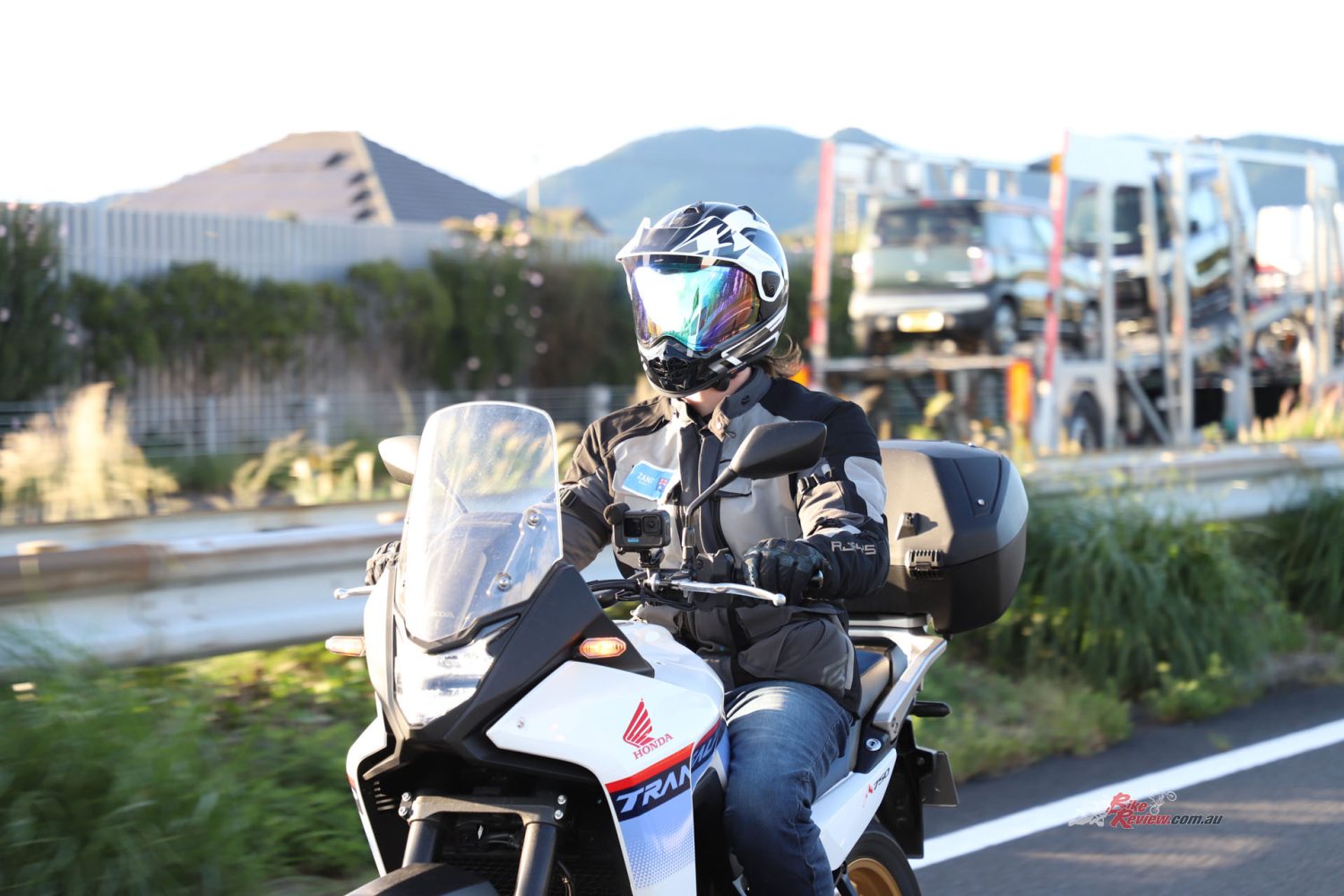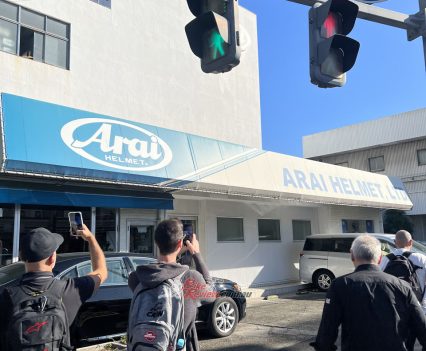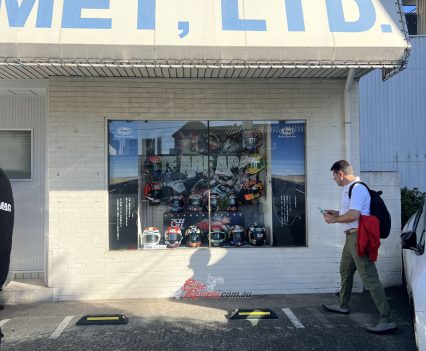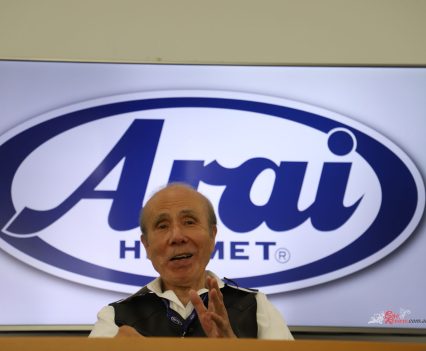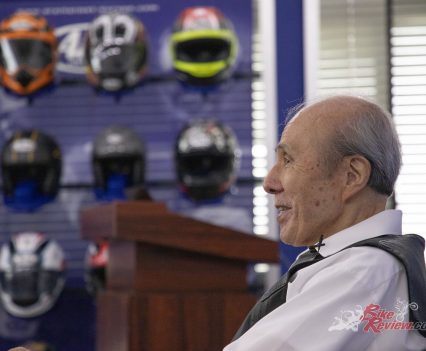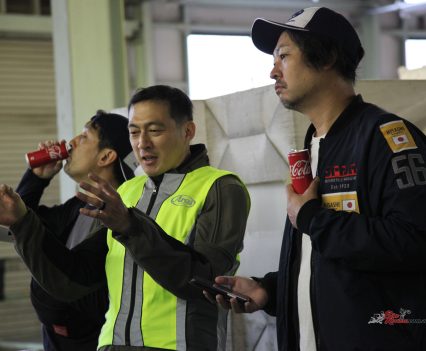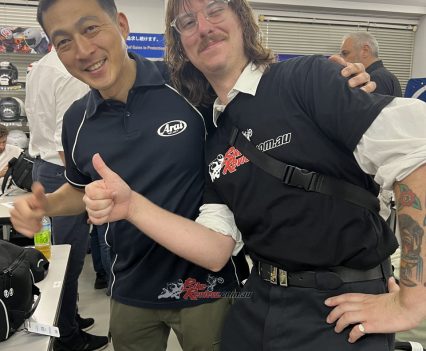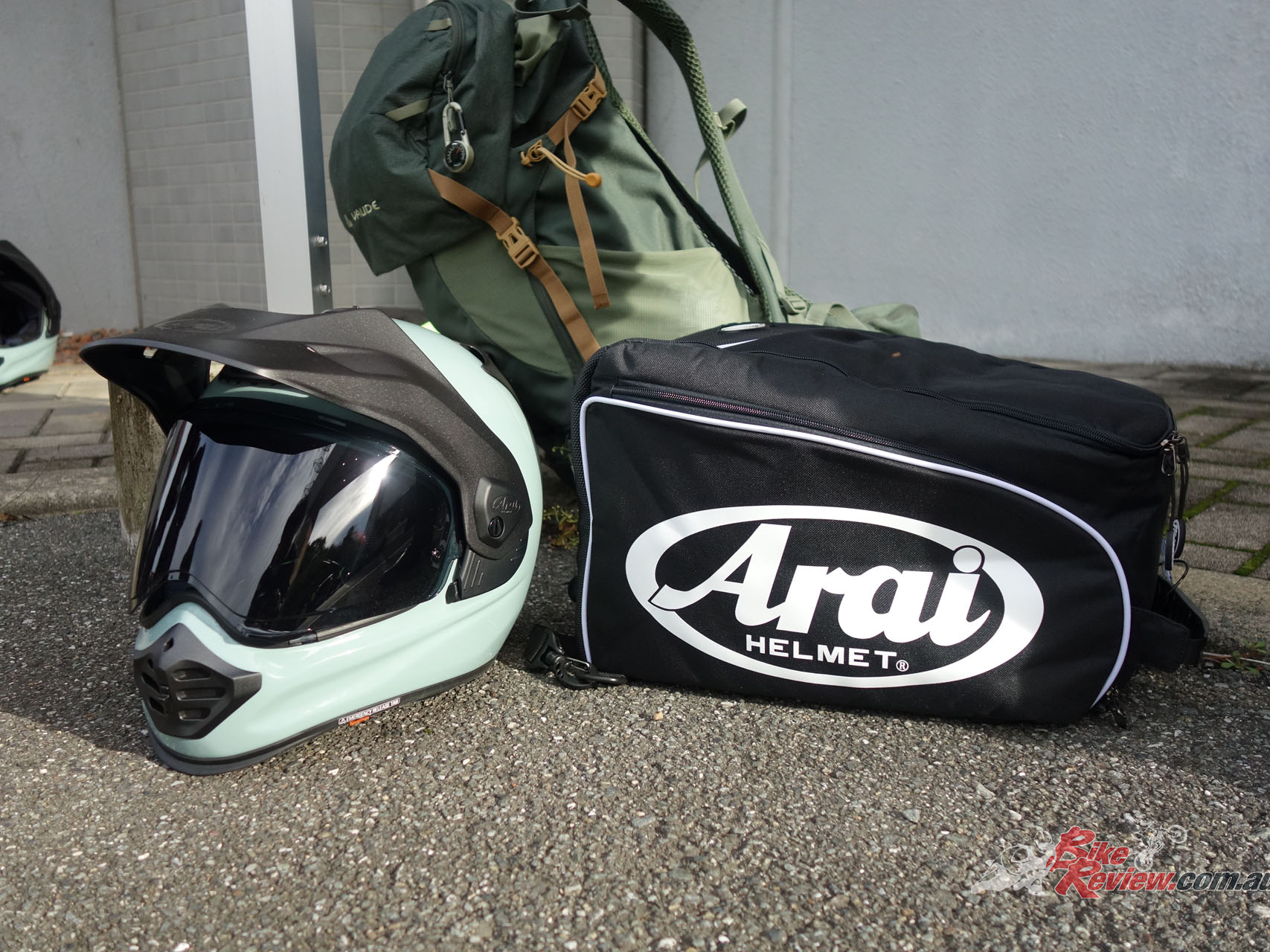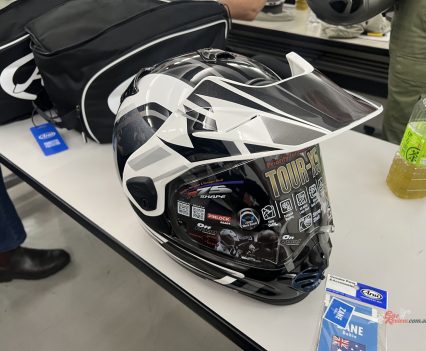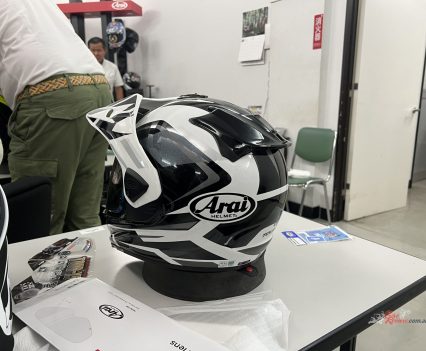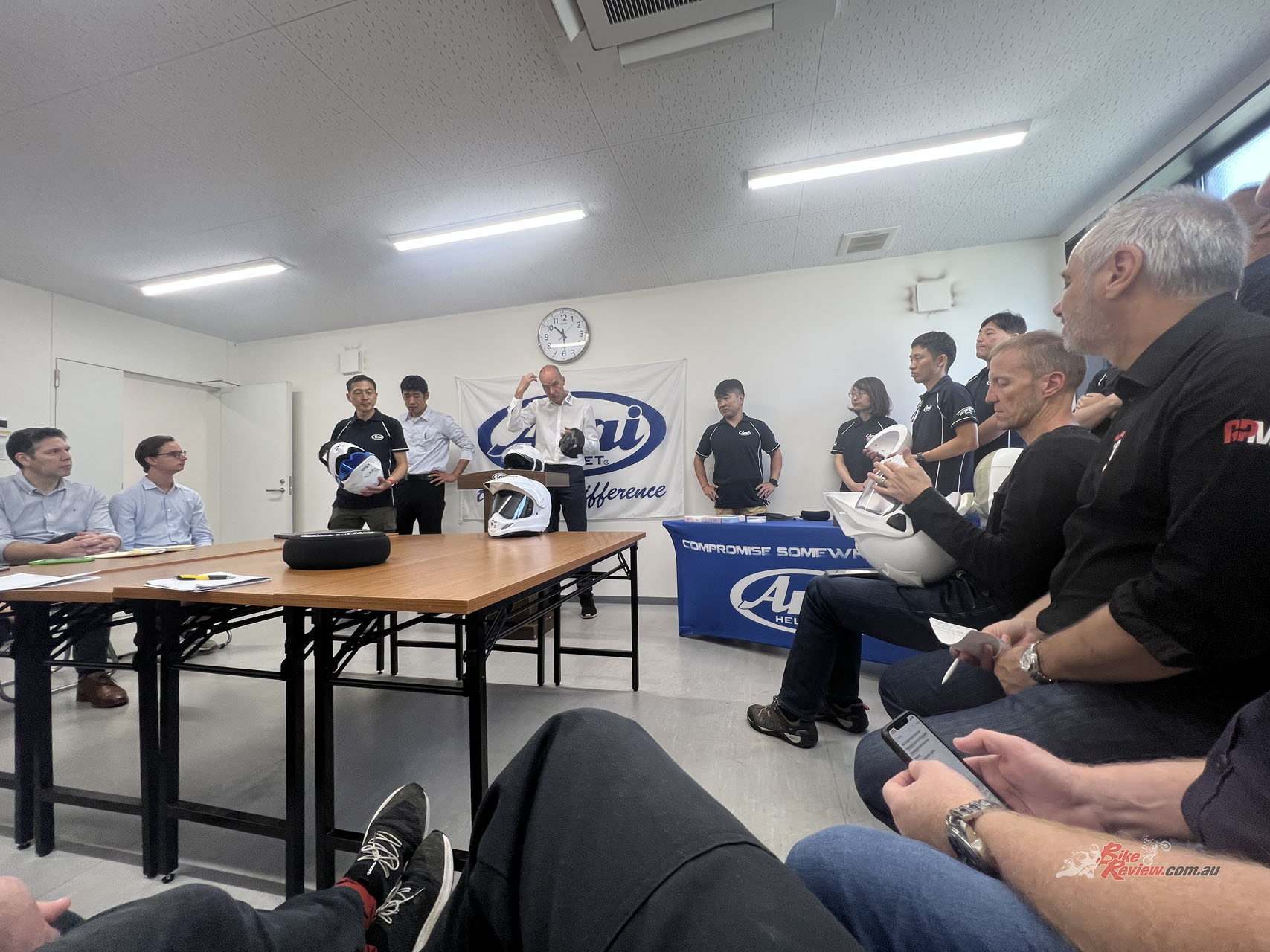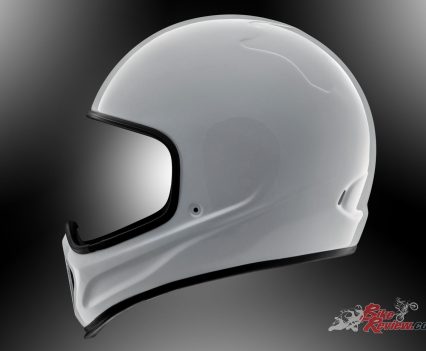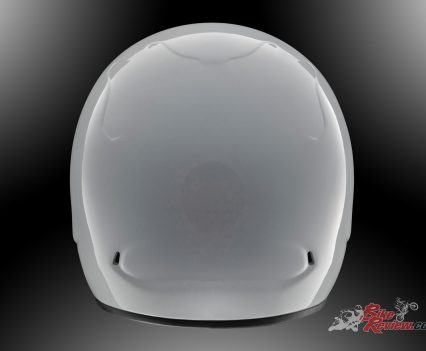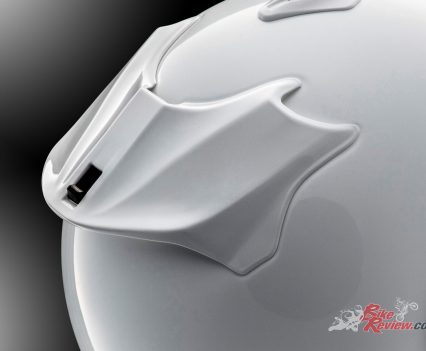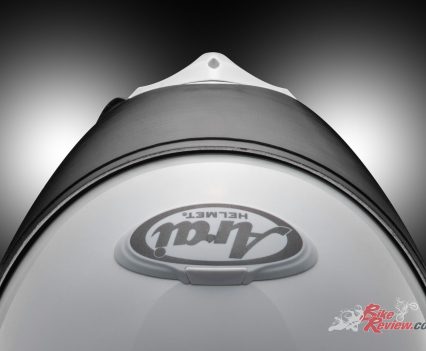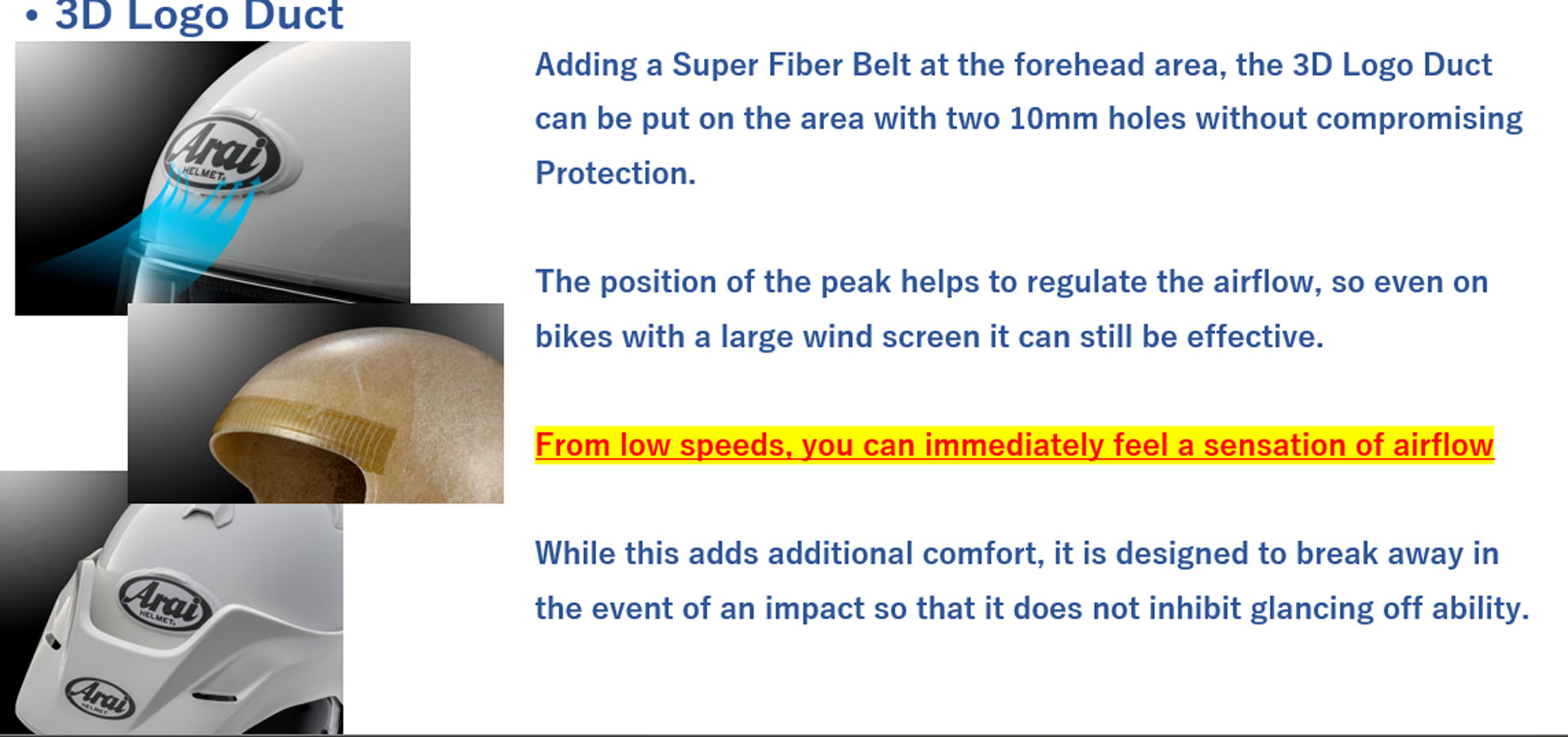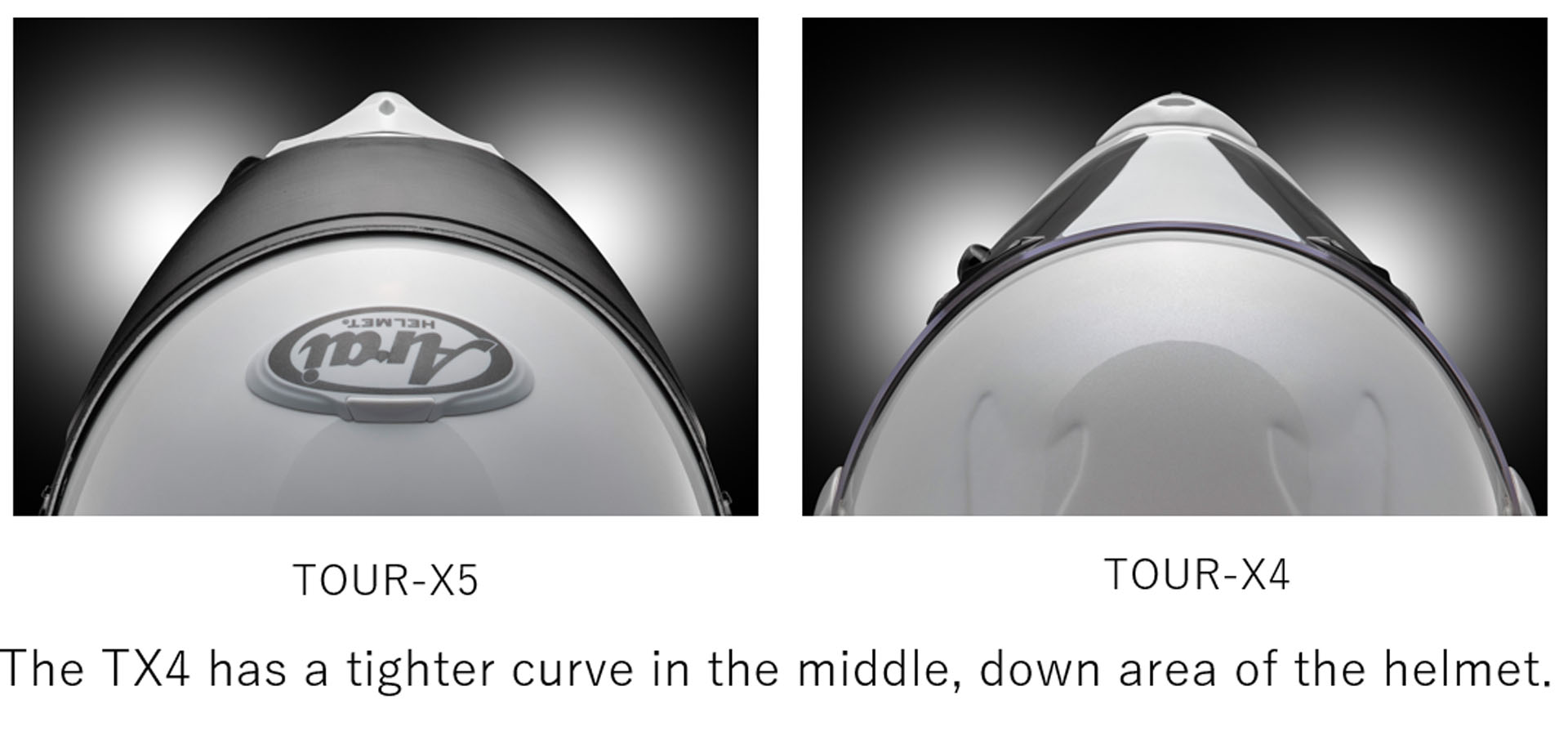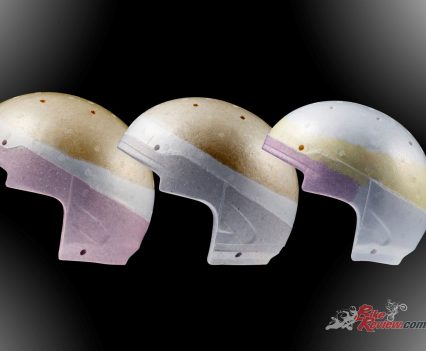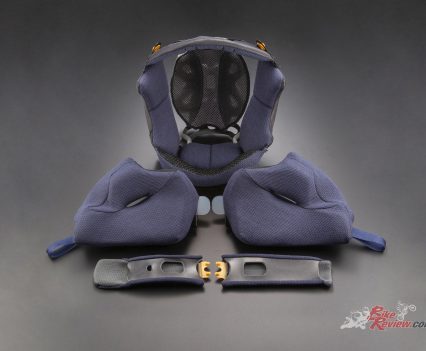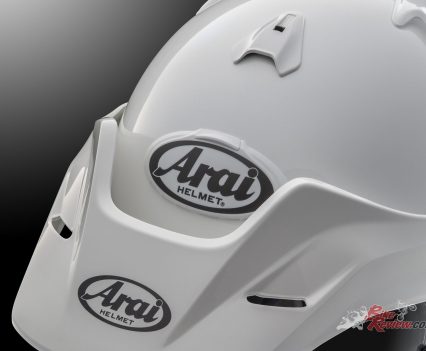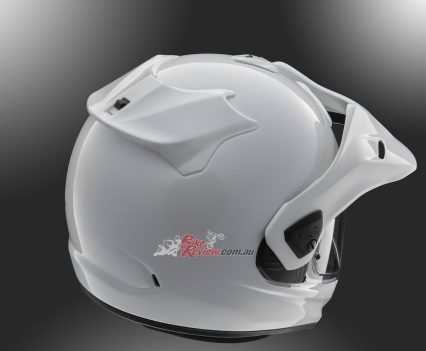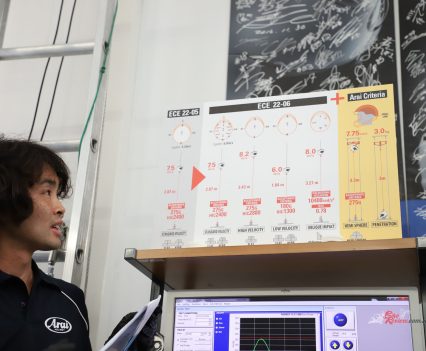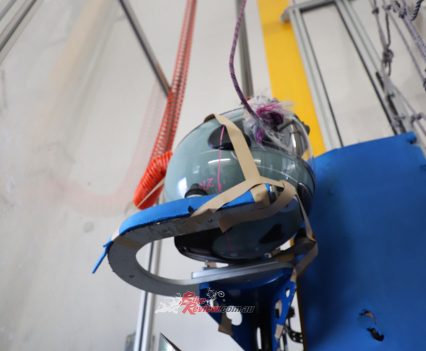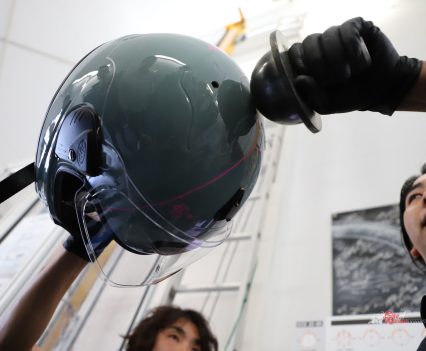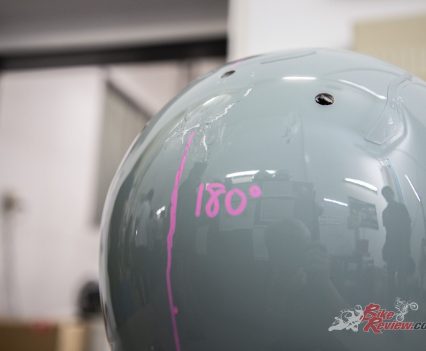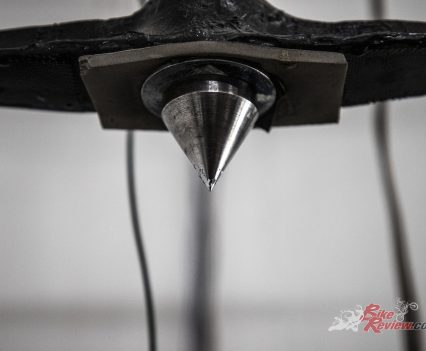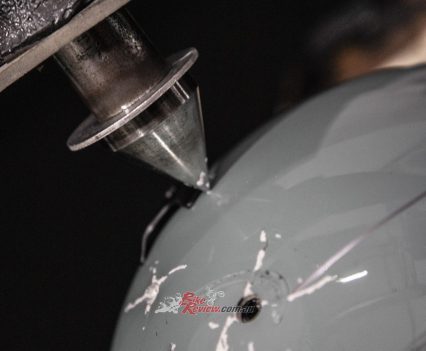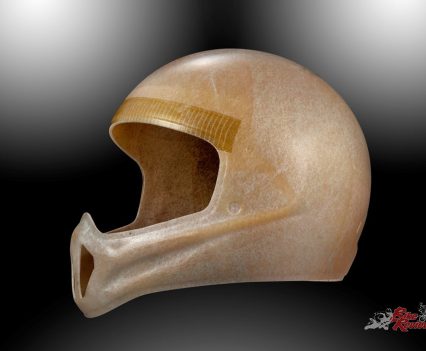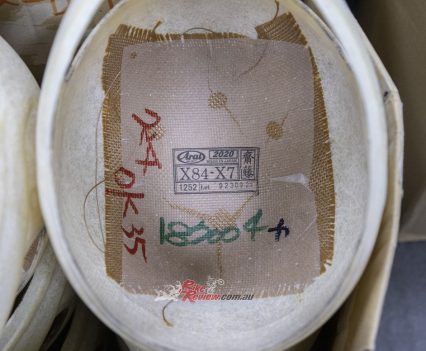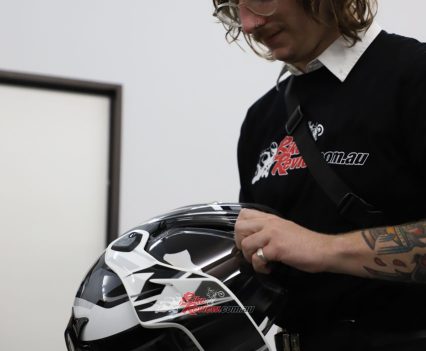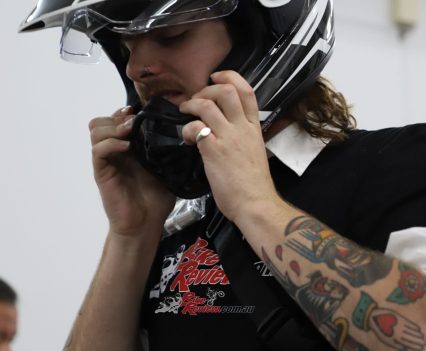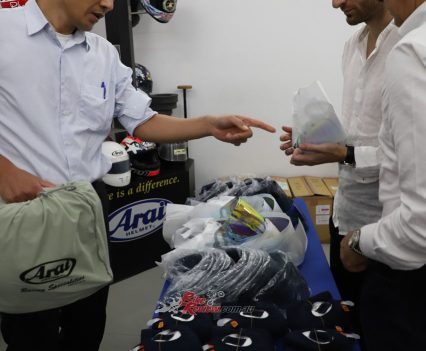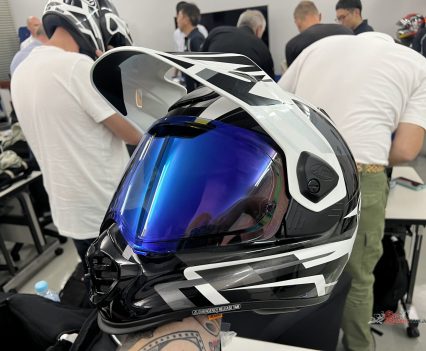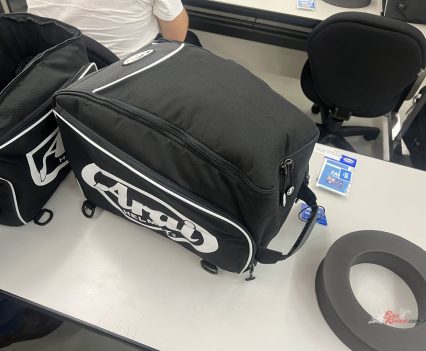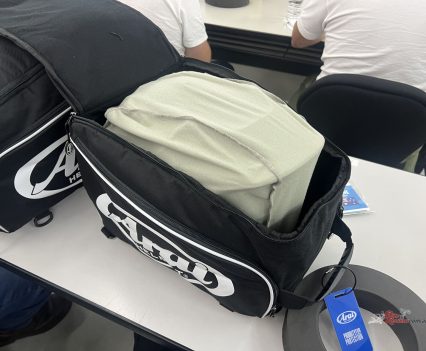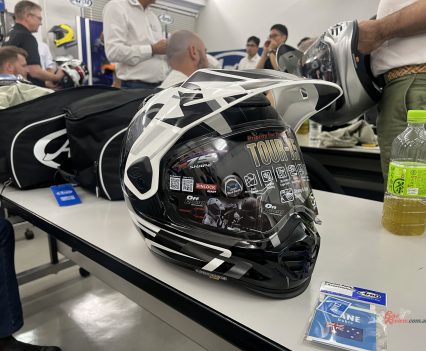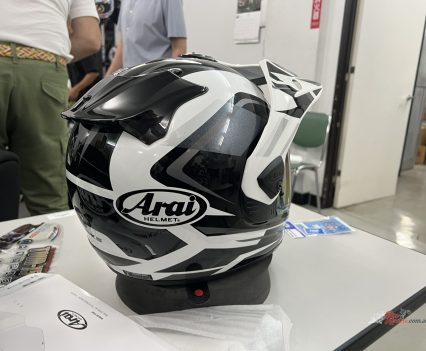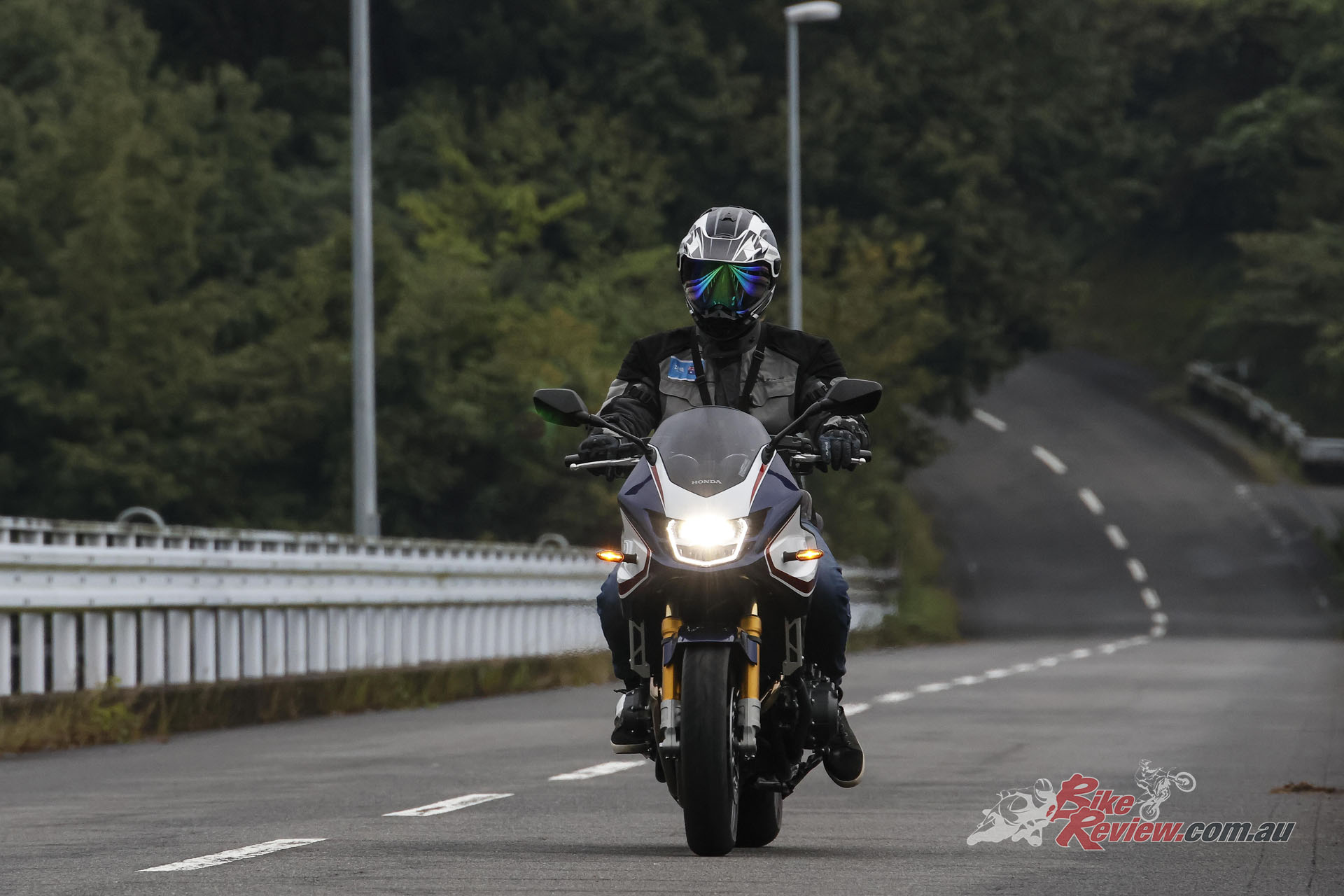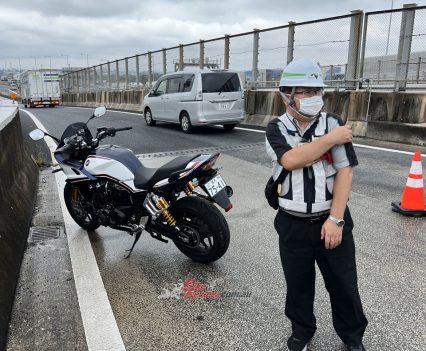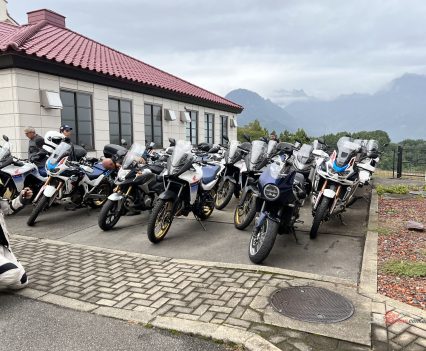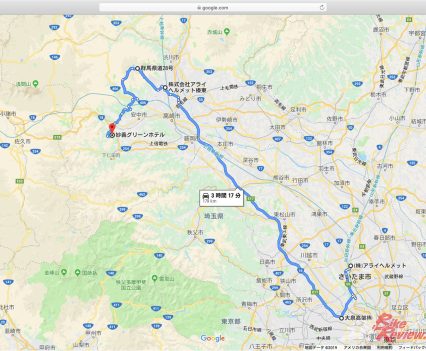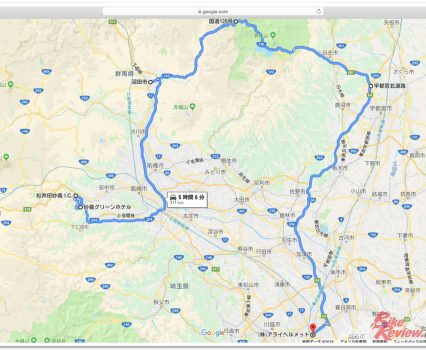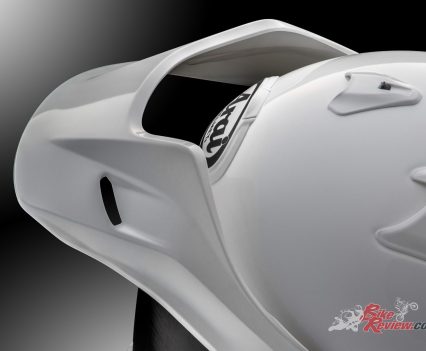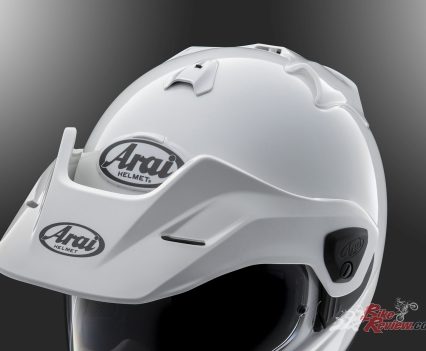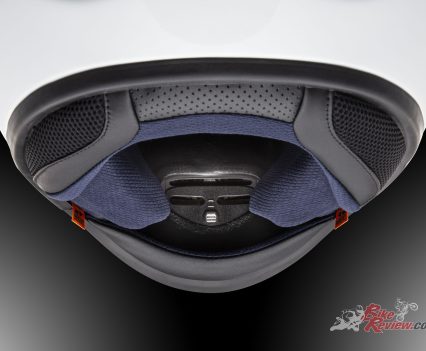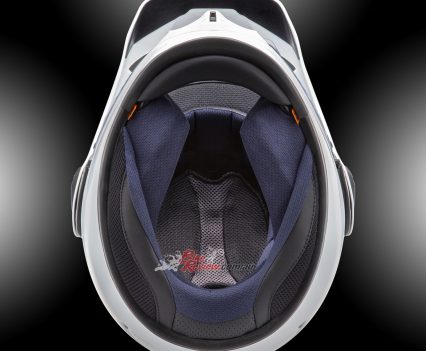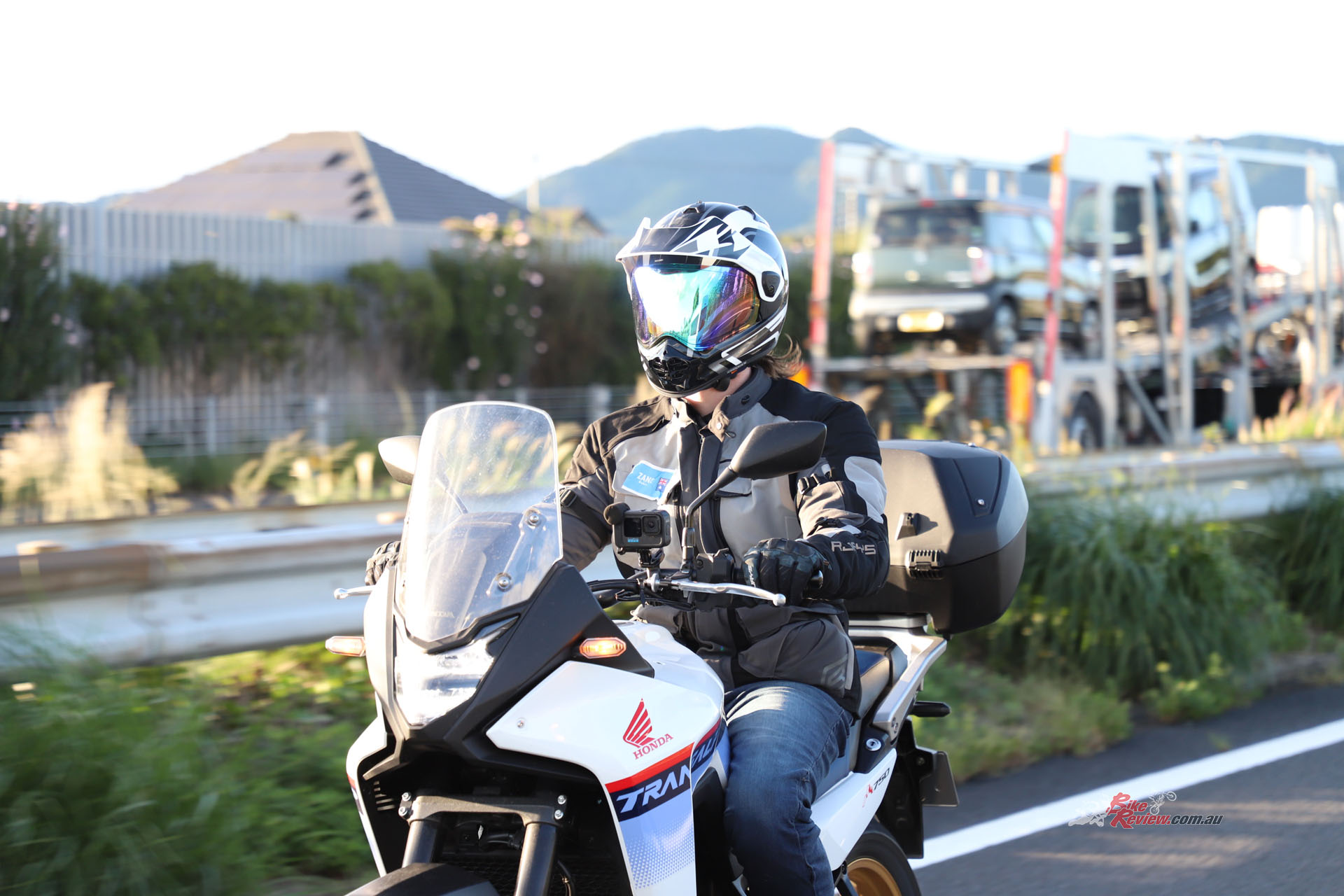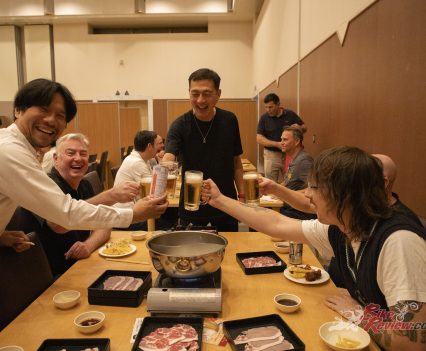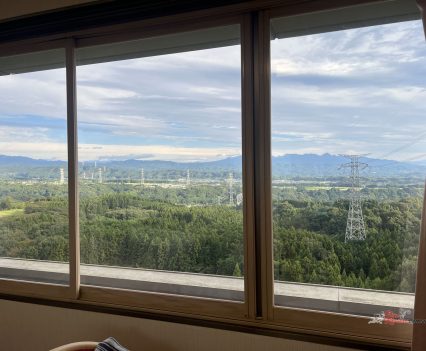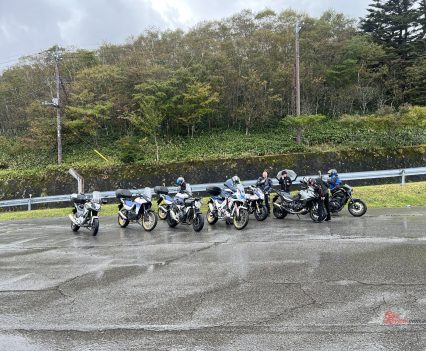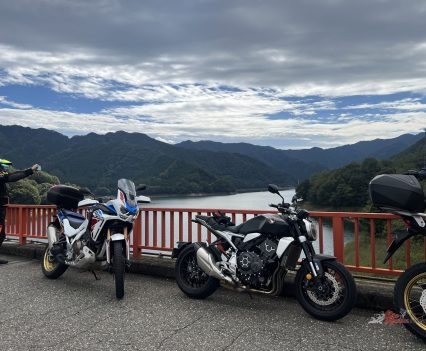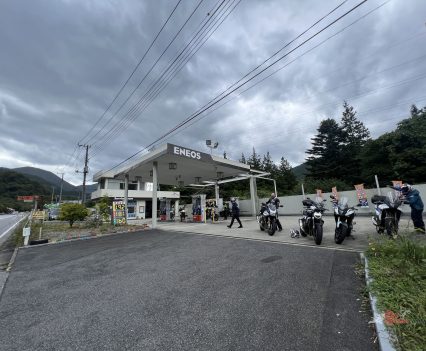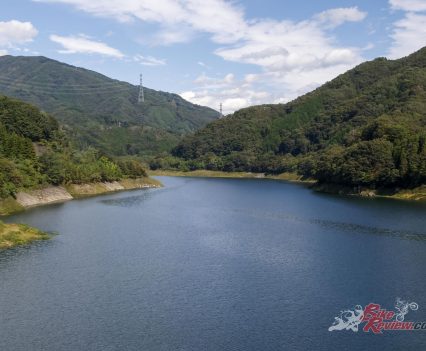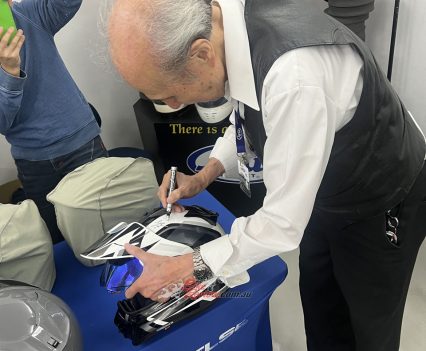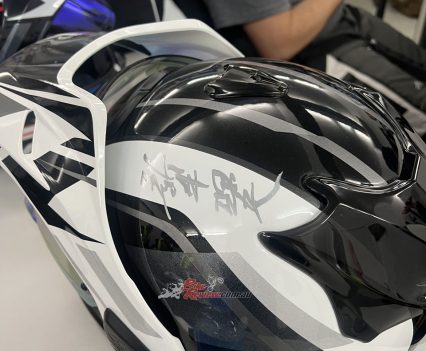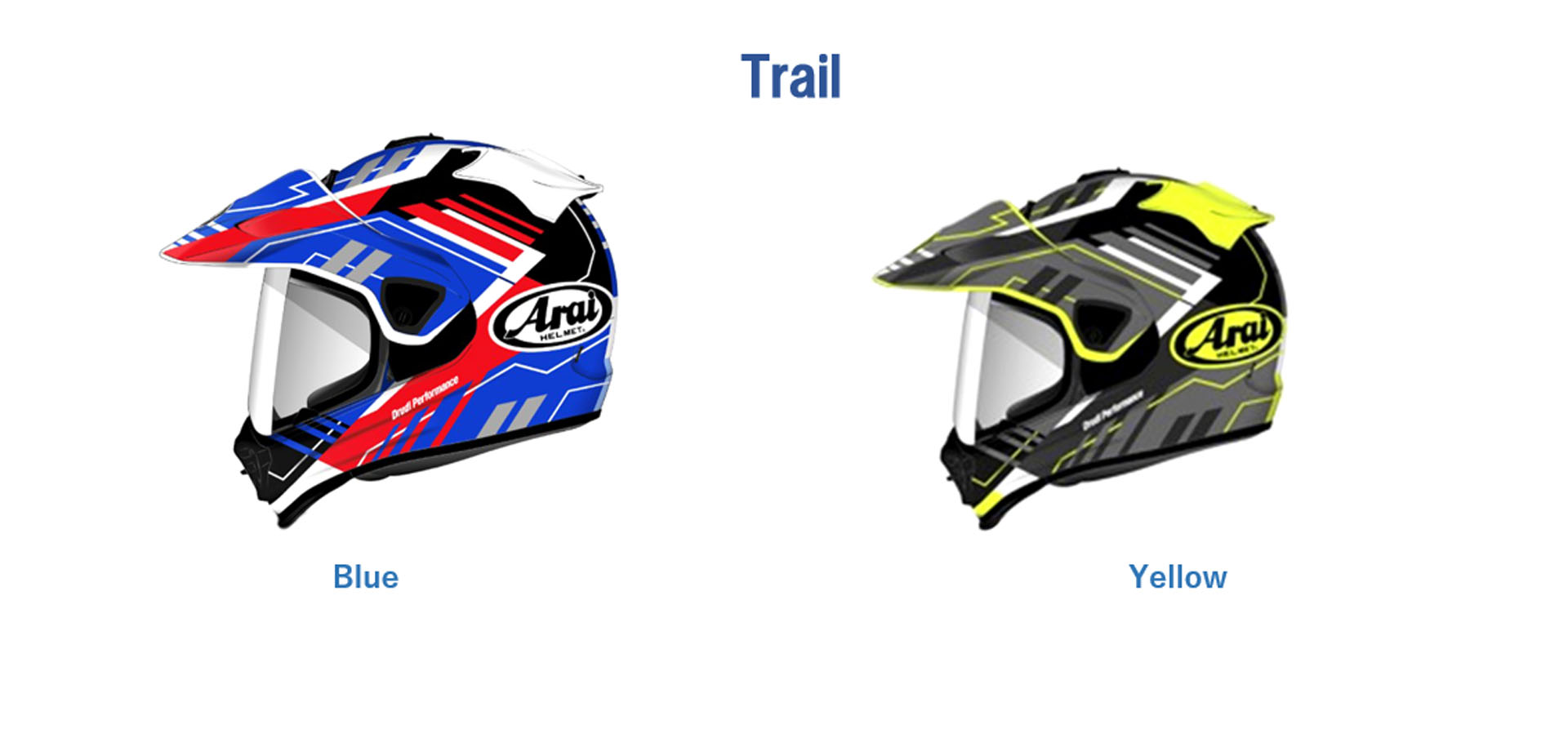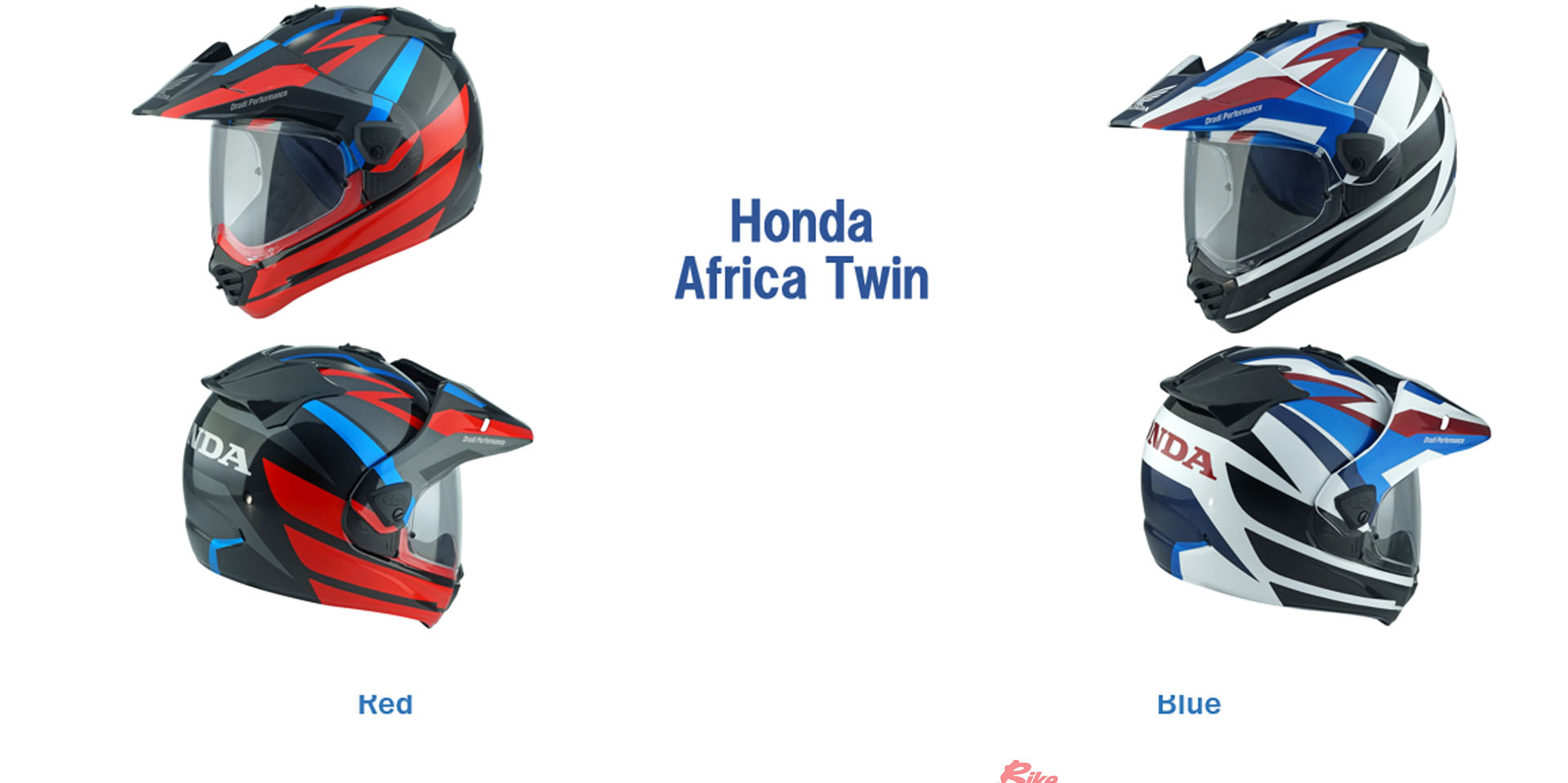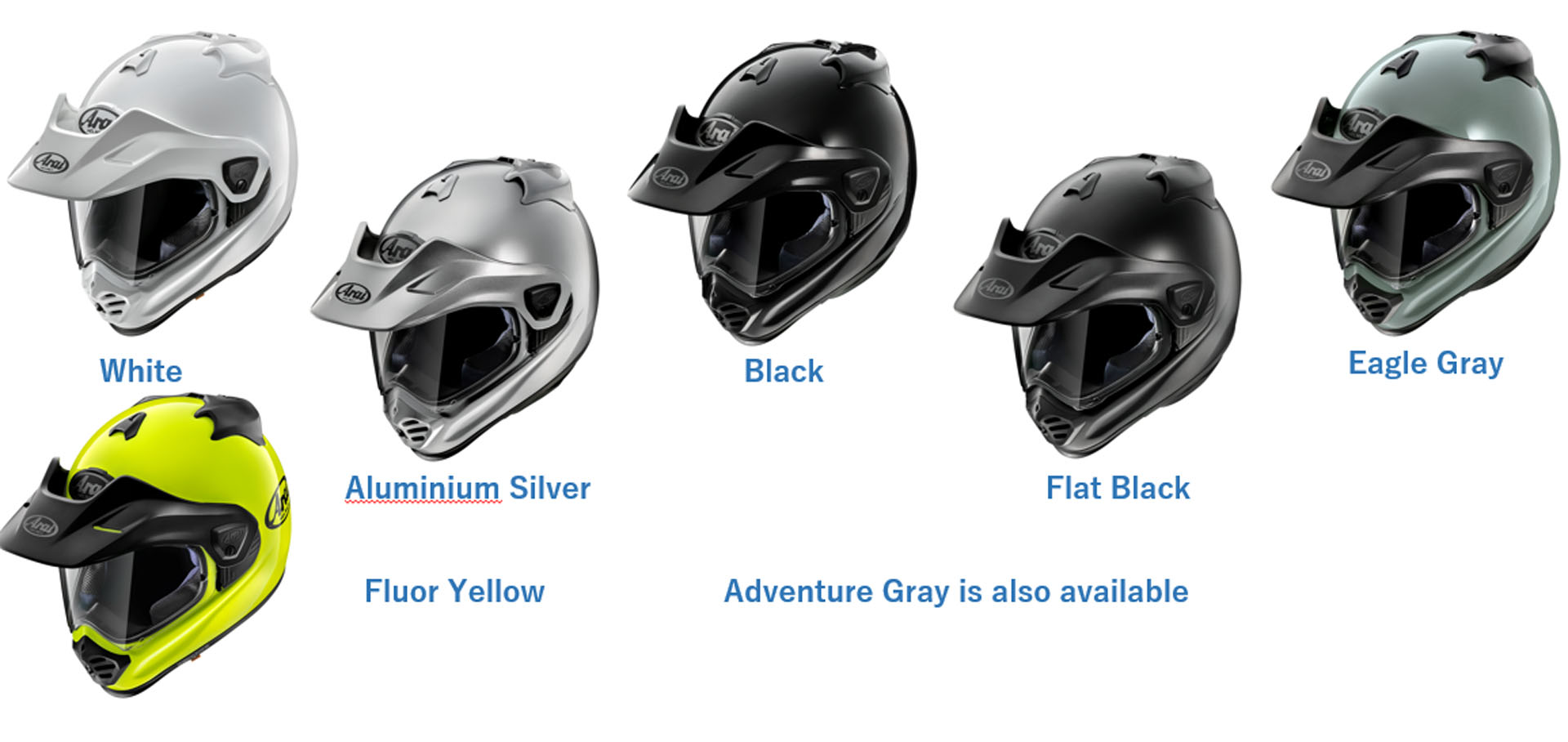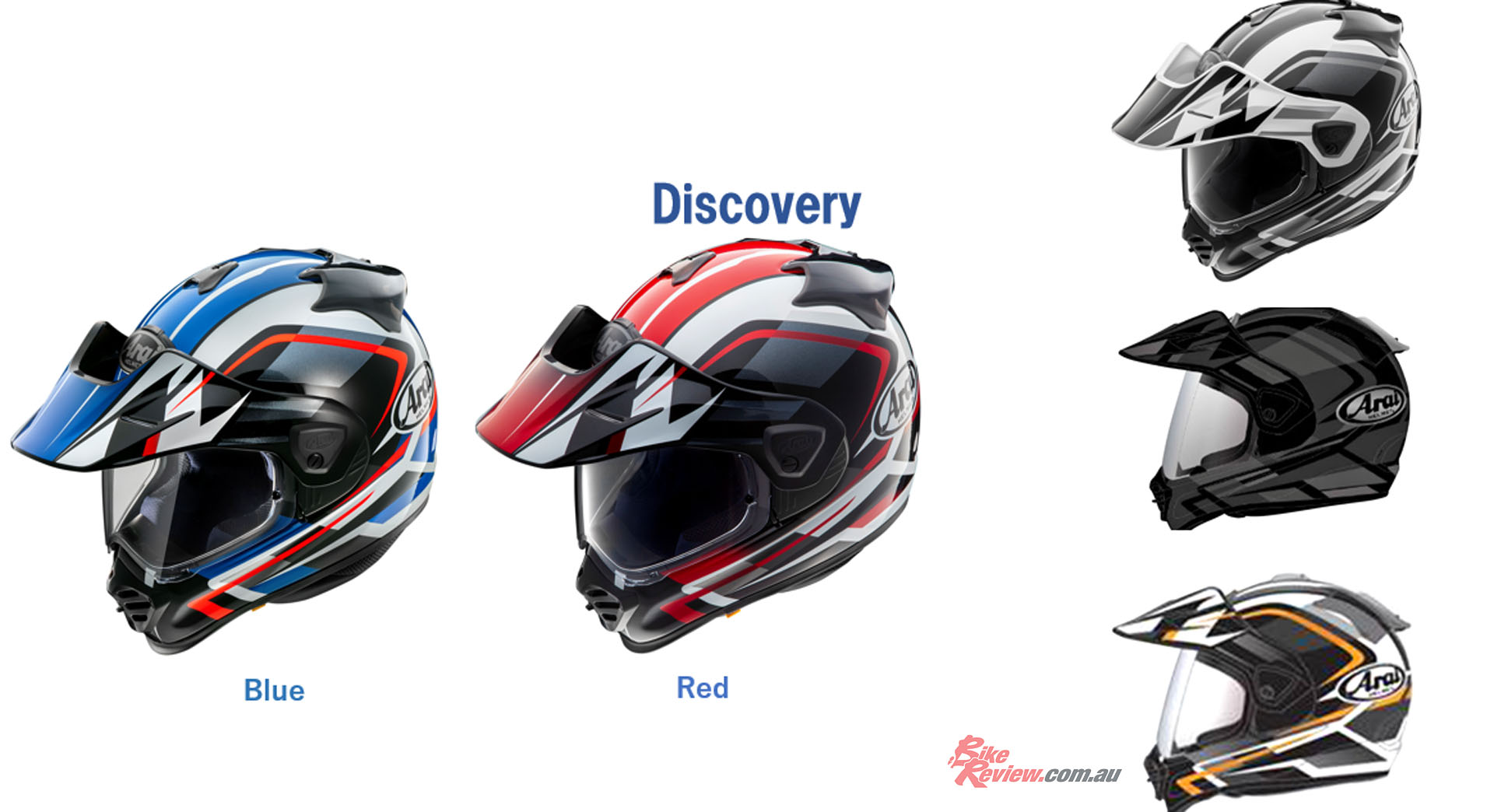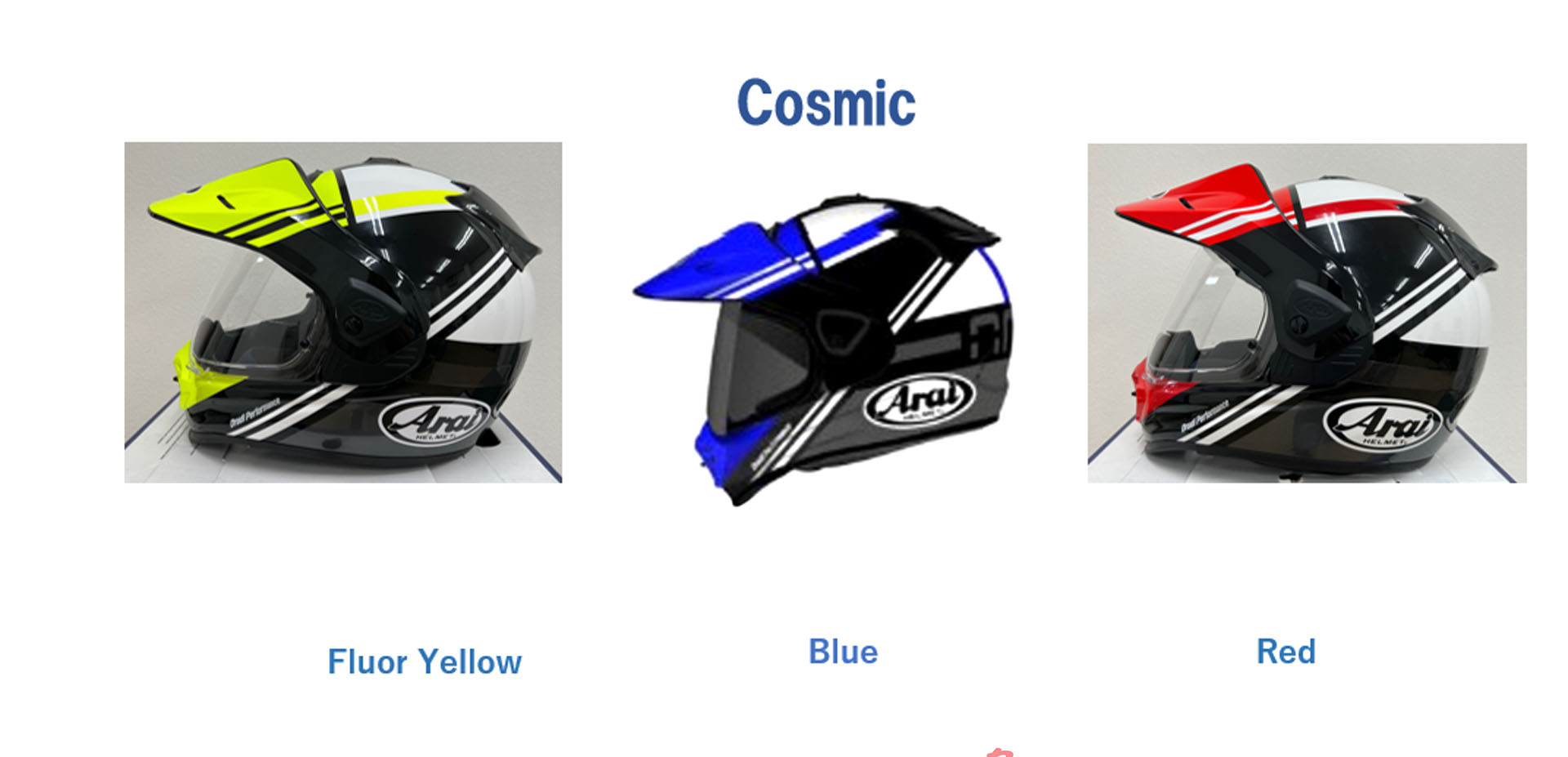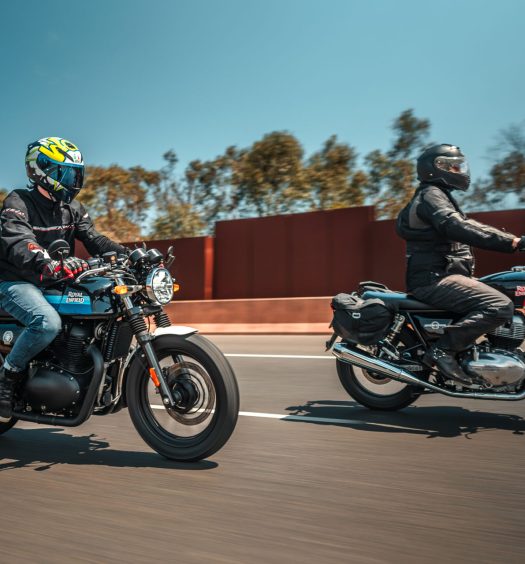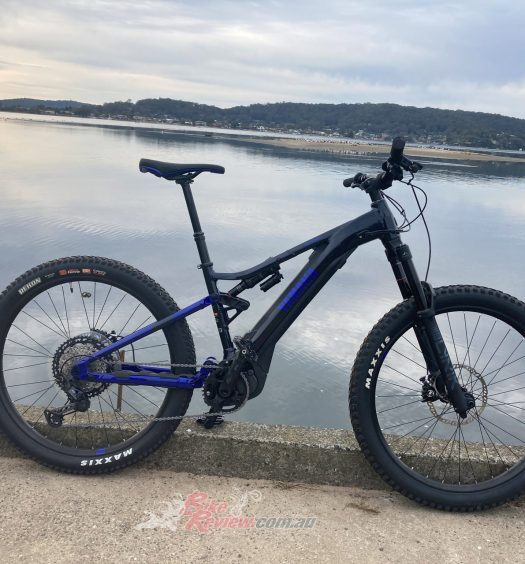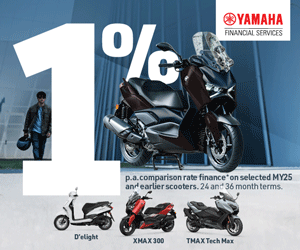Zane flew out to Saitama, Japan to check out the new Arai Tour-X5 adventure helmet. Check out what he thought of the lid after the construction process and testing it in varying conditions.
Arai is extremely proud of their latest adventure lid, evident by the fact that they flew journalists to Japan from all over the globe to come and check out how the new Tour-X5 is constructed and spend a good few days testing it out in multiple conditions.
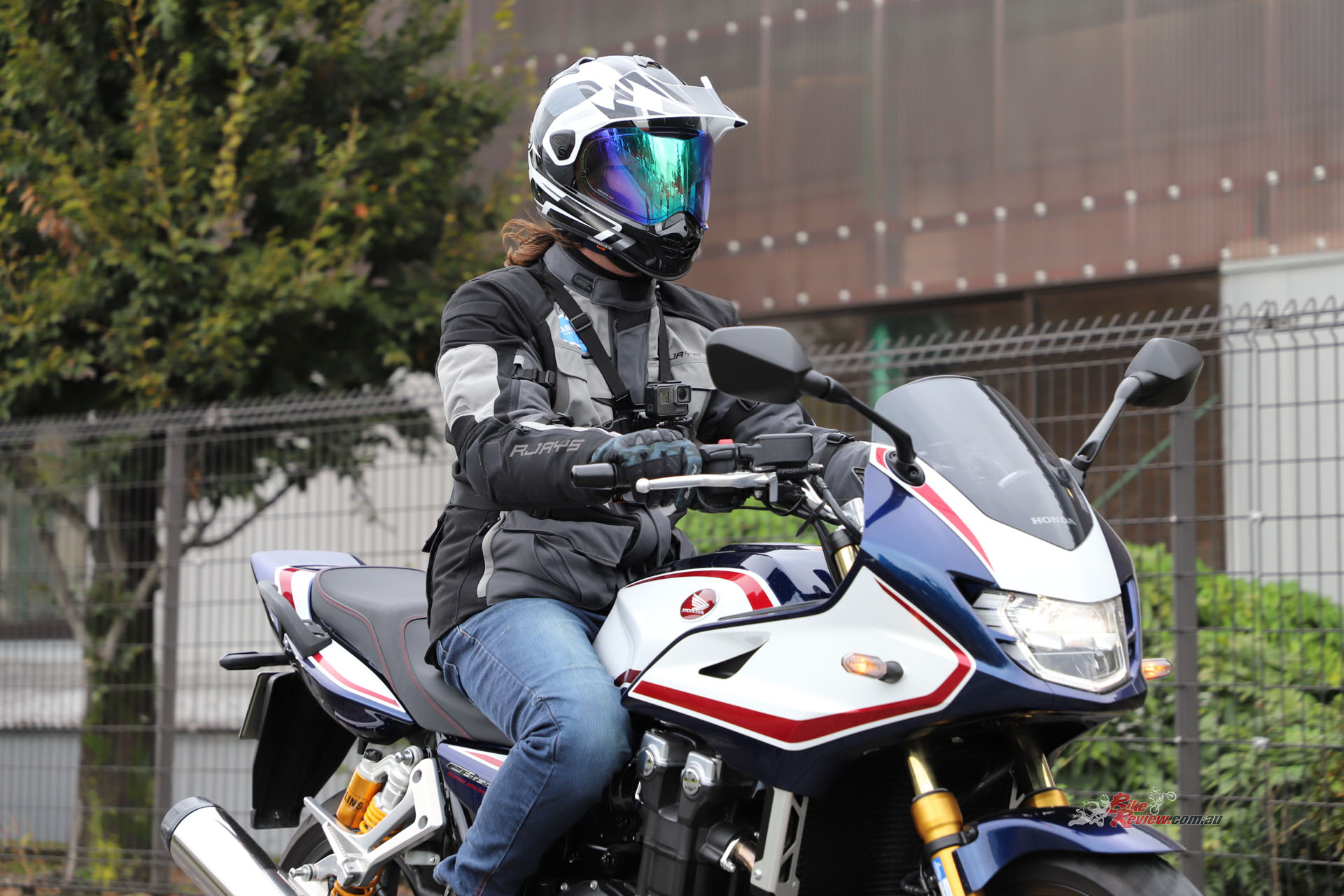
Arai flew journalists from all over the globe to come and check out how the new Tour-X5 is constructed and spend a good very hundred KM testing it out in multiple conditions.
It’s been nearly six years since I last had the chance to visit Japan, so you can best believe I jumped at the opportunity to fly over and be one of the first people in the world to see and wear the new Tour-X5 lid. We did get a massive tour of all four plants that Arai have scattered across the Saitama and Shinto regions, which we have on the way for you to read about very soon.
Despite the fact that this is an adventure lid, we unfortunately didn’t get the opportunity to test it off-road. We will be putting the new Tour-X5 through it’s paces in dusty and muddy Australian situations in an off-road test now that the lid is in Australia!
It’s worth noting the family aspect and involvement of the Arai family in the business. Michio Arai, son of founder Hirotake Arai, is still heavily involved with the company. He comes in at 7am and sits at a desk the same size as all the other office employees, then leaves at 7pm, five days a week. He is 85 years old. Or should I say 85 years young?
Akihito Arai is Michio’s son and currently sits as the company’s vice president. Despite being the future of the company, he has an extraordinarily down-to-earth and approachable aura about him, the same as his father. He involved himself heavily in the entire press launch, coming along for the ride and joining us for lunch/dinner each night.
More on that next week; let’s talk about the new Tour-X5. I wholeheartedly believe this is one of the best-looking adventure lids on the market. I find that other manufacturers easily fall into the trap of building a helmet that looks like a motocross helmet with a visor; aesthetically and conventionally speaking, this doesn’t work for a helmet that will hold sustained speeds and long-term comfort.
We got the chance to speak with all the designers who played a part in creating this helmet. All of them were straight into logistics, which spared us the PR buff. The design team’s acute understanding of what people need to be safe and comfortable wearing these helmets is spectacular.
The elephant in the room for the Tour-X5 is the roundness of the lid. As I mentioned, most other manufacturers go down the route of a motocross-style lid, which has sharp edges. Something I never really considered about helmets is their ability to “glance” off an impact, and a rounded design will do it a lot better than something that has a lot of of edges.
You might be thinking, “What about that peak and that diffuser?” Arai has thought about this and made anything that isn’t part of the original shell construction come off in the event of an accident. The round shape makes for a smooth impact that would get caught or bring your head to a sudden stop.
The shape of the chin area has been rounded out, too, with that front grill also detaching in an accident. With the rounding out of the chin comes a rounding out of the visor; it all adds up to a safer helmet that will deflect impacts instead of needing to take the full brunt of it.
Speaking of visors, the eye-brow vents have been removed in favour of a vent under the logo. The main reason they didn’t opt for this earlier is they didn’t want to make any holes in the shell that they didn’t have to, but an increase in strength has allowed for a new head vent that adds some extra vision and a large visor.
The next designer spoke to us about the usage of EPS foam in their helmets. They couldn’t release much information, but they did touch on the fact that Arai is the only manufacturer who can press their EPS with different densities all as one piece rather than gluing all the separate densities together. A single piece is a lot tougher than gluing pieces together, and Arai uses five different densities, each different according to the impact zone.
The following designers up are the padding engineers. For the Tour-X5, you can quickly remove the padding on the inside to reveal removable layers on the inside for a tailored fit. These are tear-off-able and you can purchase entire new pads if you pull out too much. The neck roll is now wider by 10mm over the Tour-X5 to allow for an accessible take on and off. The padding allows for a comfortable fit with glasses and easy support for intercom systems.
The final design change is the new peak; not only do I love the appeal of it, but it appears to have an increase of airflow over some of the motocross-inspired adventure helmets I’ve used in the past. This is heavily important for touring riders as a peak can often add strain to your neck whilst travelling at 110km/h for extended periods.
We also got a fantastic look at a real-time drop test on the Tour-X5. Arai walked us through multiple drop tests that used a sensor on the inside, which measured force; even after being dropped at various angles, the sensor picked up a pass for each one.
The Tour-X5 exceeds ECE R22.06 standards since Arai does two extra tests on the helmets before they release the final design to the public. Dropping the helmet on a hemisphere at 7.75m/s and doing a penetration test on the shell via a very sharp edge, which doesn’t make its way to the inside of the helmet according to the sensors and a feel of the inside of the lid after the test.
I’ll touch further on Arai shell construction with my factory feature as most of the modern range is made the same way, but they use a unique super fibre along with Kevlar strengthening mats in certain parts (top of the head and a super fibre band above the brow). You can see why you pay more for a helmet like this as the super fibres are 30 per cent stronger than regular fibreglass but cost six times more.
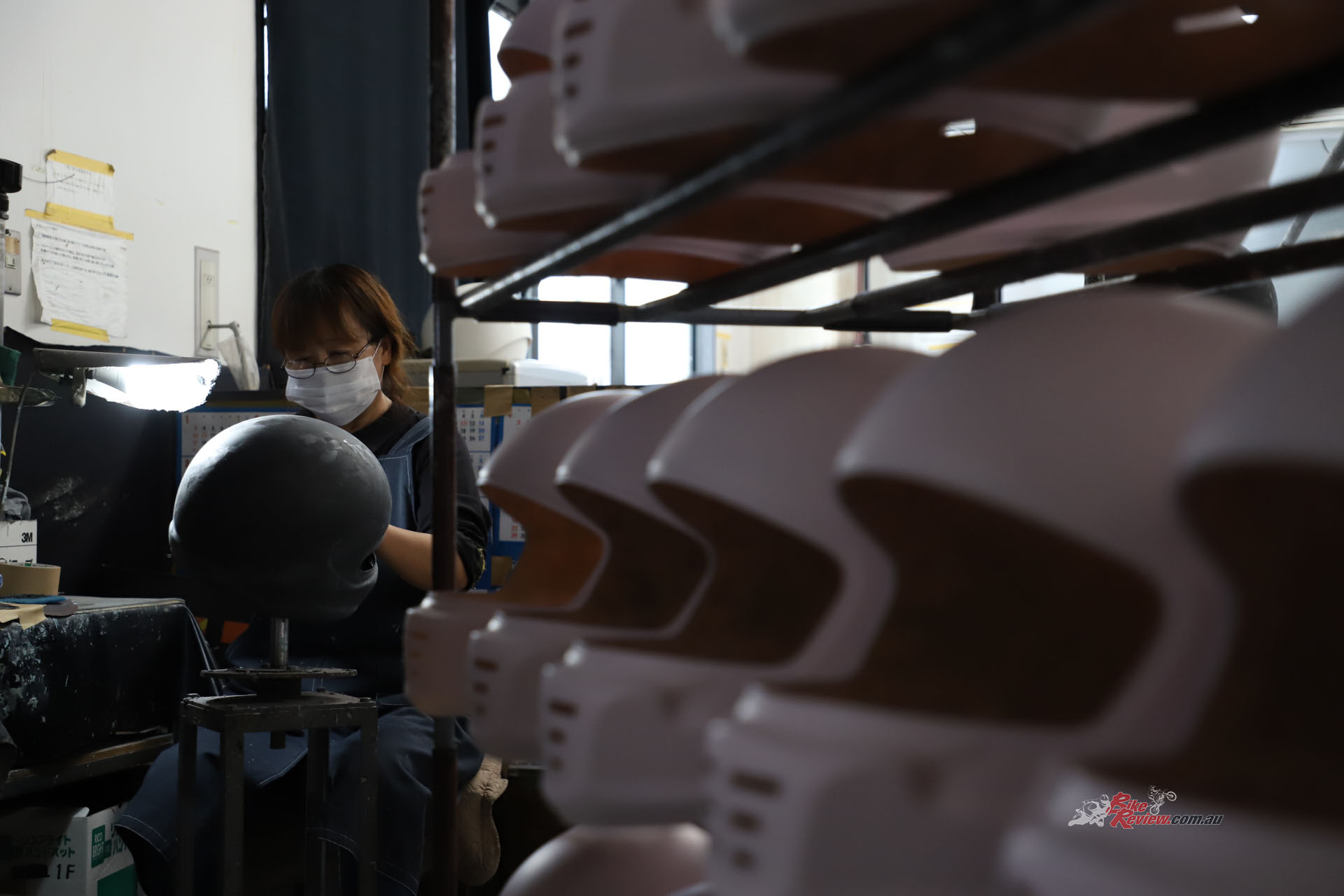
We will have a full Arai factory tour feature up asap! Keep an eye out for this rare opportunity to see what goes into making these helmets.
After a jam-packed day of absorbing some of the most interesting information, it’s time to head off to bed ready for a massive two days of riding up to Nikko, through the Gunma prefecture and stopping for an overnight in the Fukushima prefecture. I opt for the Silver “Discovery” colour scheme.
We get acquainted with our new Tour-X5 lids, and because I’m filling in for Jeff due to his injuries, I get a size Large while I’m an XL in most other helmets. Sure enough, the lid fits perfectly on my head, even without breaking in. This does give me thoughts that Arai lids run large compared to AGV, Shark and Bell, so it might be worth going into a store to try one on if you’re coming from a different brand.
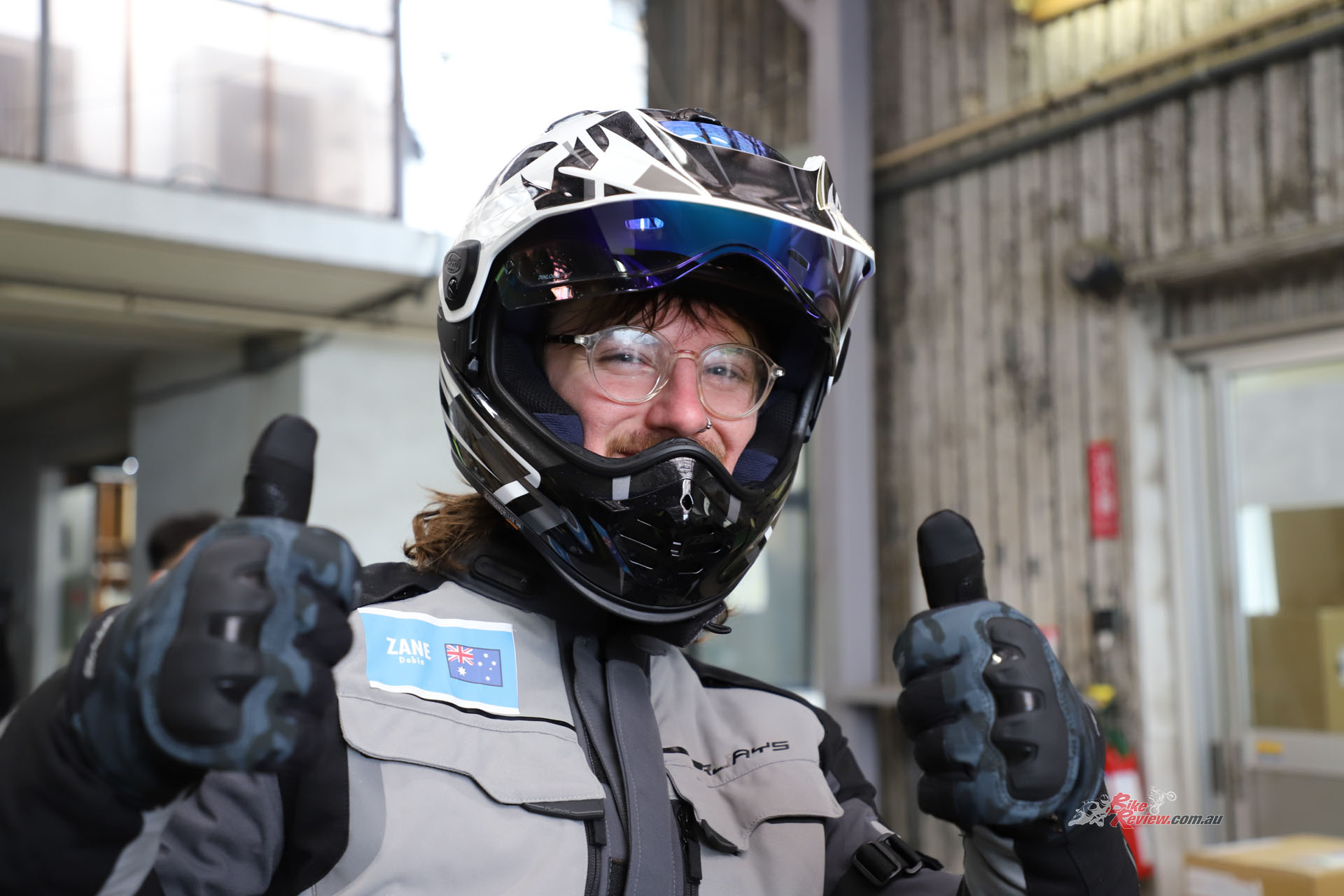
Ready for the long ride ahead. Plenty of chance to try the Arai Tour-X5 in a number of different conditions.
We spend some time adjusting the lid to our liking; the only thing that doesn’t fit quite right for me is the nose guard. My Eastern European nose does cause issues with fit in other helmets and it’s pressing up against the nose guard, a quick removal and the helmet fits perfectly.
The Arai employees give us a hand with changing the visor. The peak comes unclipped with two little buttons on the side and the visor comes off with ease. A quick swap over to the oil-slick tinted visor and a straightforward application of the Pinlock due to the poor weather ahead of us, and I had the visors switched over and the peak back on in under a minute.
Arai did give us multiple examples of how you can run various styles with the Tour-X5. I opt for the standard adventure look with the peak and visor. You can run no visor and goggles for a more motocross-inspired look, or you can remove the peak and keep the endcaps by undoing it with a coin for a more scrambler/café racer appeal.
The peak comes unclipped with two little buttons on the side and the visor comes off with ease. I had the visors switched over and the peak back on in under a minute.
That increase in shoulder roll does wonders for putting the lid on; it just slips easily onto my head yet has a snug feeling. It’s a conventional double-d shackle strap, which I wouldn’t expect any less from a brand that’s all about safety.
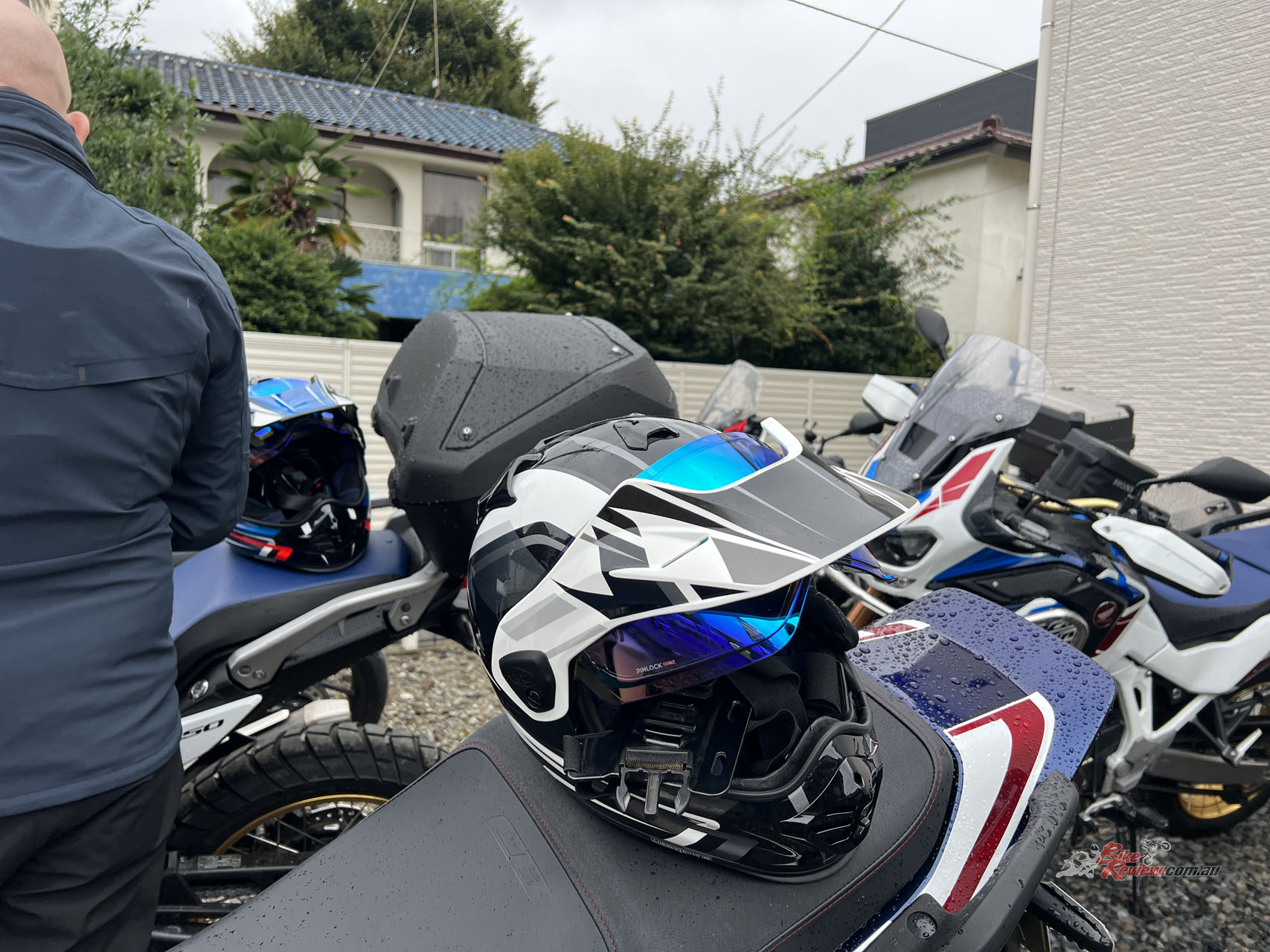
The Tour-X5 weighs in at 1700g (claimed), so it’s not the lightest lid on the market by far and one of the heavier ones in the mid-high adventure helmet price tiers.
The Tour-X5 weighs in at 1700g (claimed), so it’s not the lightest lid on the market by far and one of the heavier ones in the mid-high adventure helmet price tiers. I’m glad that Arai has gone down the route of making it safer rather than trying to shed a few hundred grams, but it’s something to keep in mind…
Making our way to our bikes, I manage to score myself a Honda CB1300 Bol d’Or SP to ride for the day, absolutely stoked to be soaking up the Japanese roads on a big four-cylinder machine. We depart in some sprinkling weather, which gives us an excellent chance to test out the waterproof nature of the new Tour-X5.
I will admit, within about 30 minutes, I was being yelled at in Japanese at a toll gate after my translator was told to head on his way, and they kept me there. Something to do with my toll card not working. Google Translate was no help, but I was on my way after the next group caught up.
Arai Ride Route
Check out the epic route we had planned out for the next two days. While we did have to traverse along the freeway for quite some time, we actually had some absolutely amazing twisties planned out. Heading out of the main cities of Japan will show you a completely different side of the country, the natural scenery is absolutely stunning.
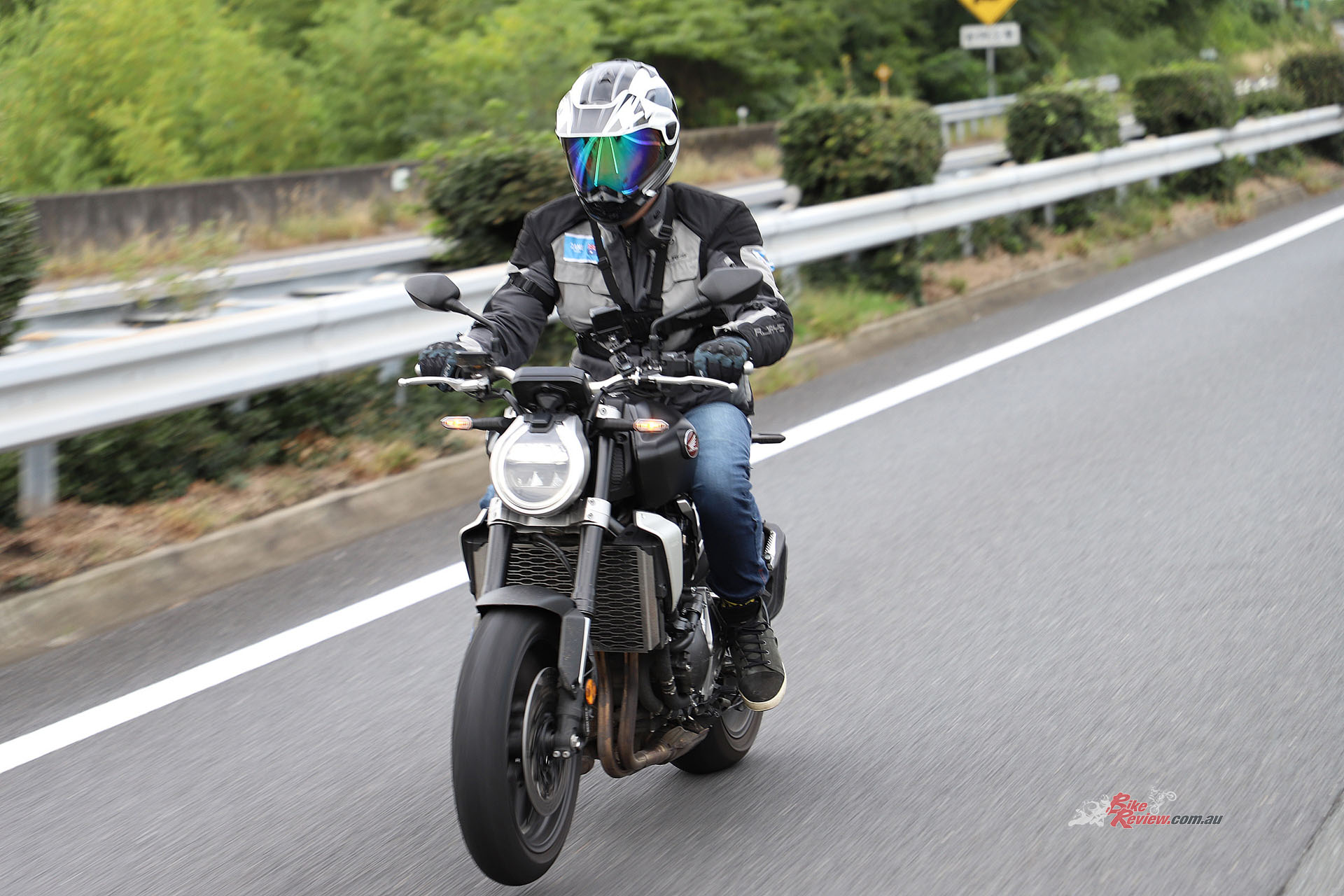
“The Tour-X5 is epic at freeway speeds; there is a noticeably low amount of wind noise compared to other helmets in the range, dropping to sub 100km/h, and the wind noise almost completely disappears.”
The Tour-X5 is epic at freeway speeds; there is a noticeably low amount of wind noise compared to other helmets in the range, dropping to sub 100km/h, and the wind noise almost completely disappears. It should also be noted that opening the vents didn’t alter the wind noise level at all, so having them open 24/7 in summer will be on the cards.
Travelling down the freeway, I’m mostly interested in seeing how that new peak design handles over 100km/h speeds, and it passes with flying colours. My neck is saved, and you can only really feel the wind drag of it when you lift your head almost vertically; it’s undoubtedly one of the better adventure helmets for high-speed riding.
“We crank up the speeds to over 120km/h and the wind noise gets noticeable. Neck strain is the opposite; it’s unnoticeable at high speeds, the peak designer needs a pat on the back.”
We crank up the speeds to well over 120km/h, and the wind noise gets noticeable. Neck strain is the opposite; it’s completely unnoticeable at high speeds, the peak designer needs a pat on the back.
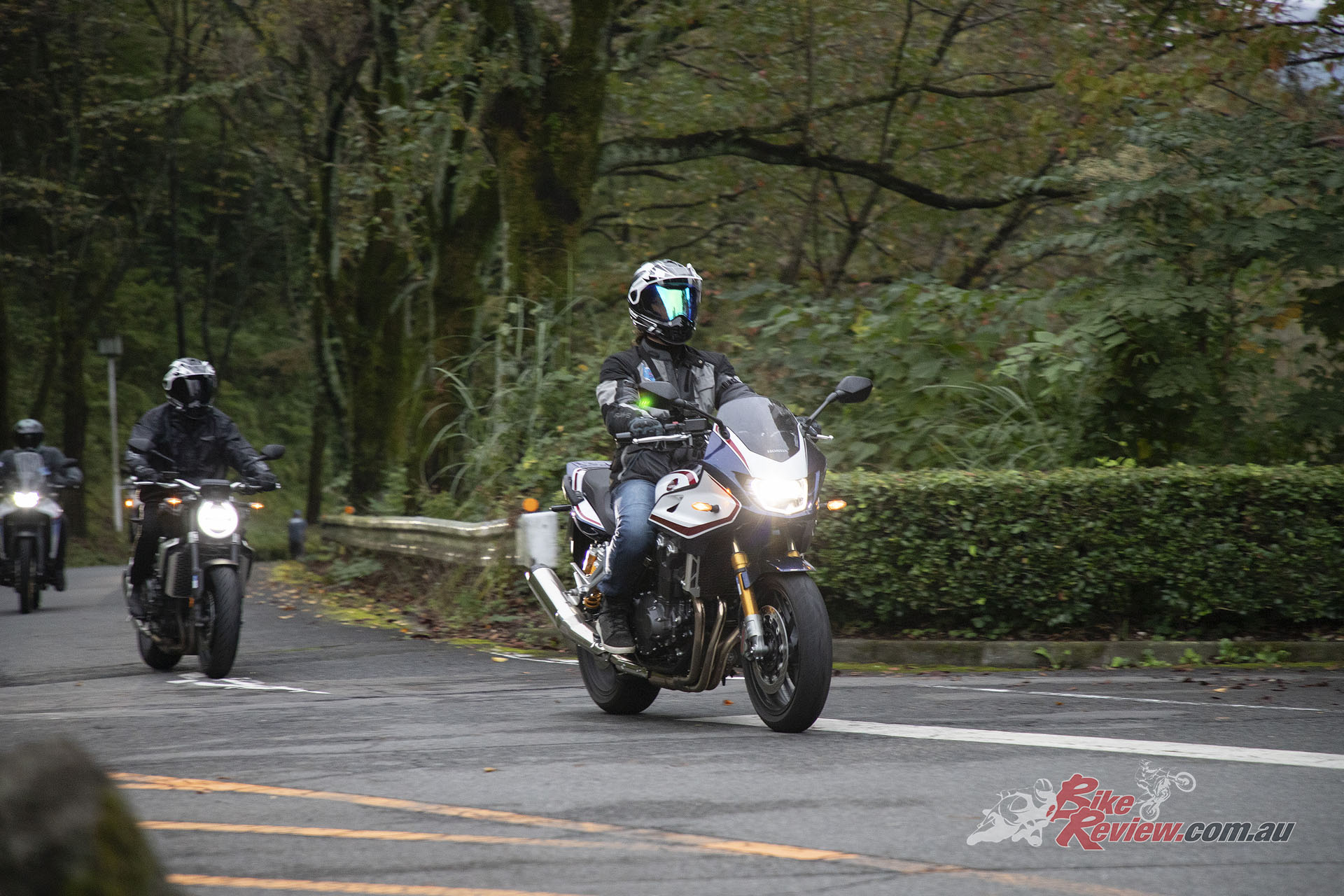
“Hitting those higher speeds, I feel like I can still keep my head straight without it moving around from wind buffeting.”
While the diffuser on the back looks absolutely spectacular, Arai says it actually serves a purpose. It’s hard to tell if it does make a massive difference on the road, but I can say that helmet stability is up there with the rest of the highlights. When hitting those higher speeds, I feel like I can still keep my head straight without it moving around from wind buffeting. The only time I felt strain on my head was when the wind started blowing from the side and hit the lid directly on the side.
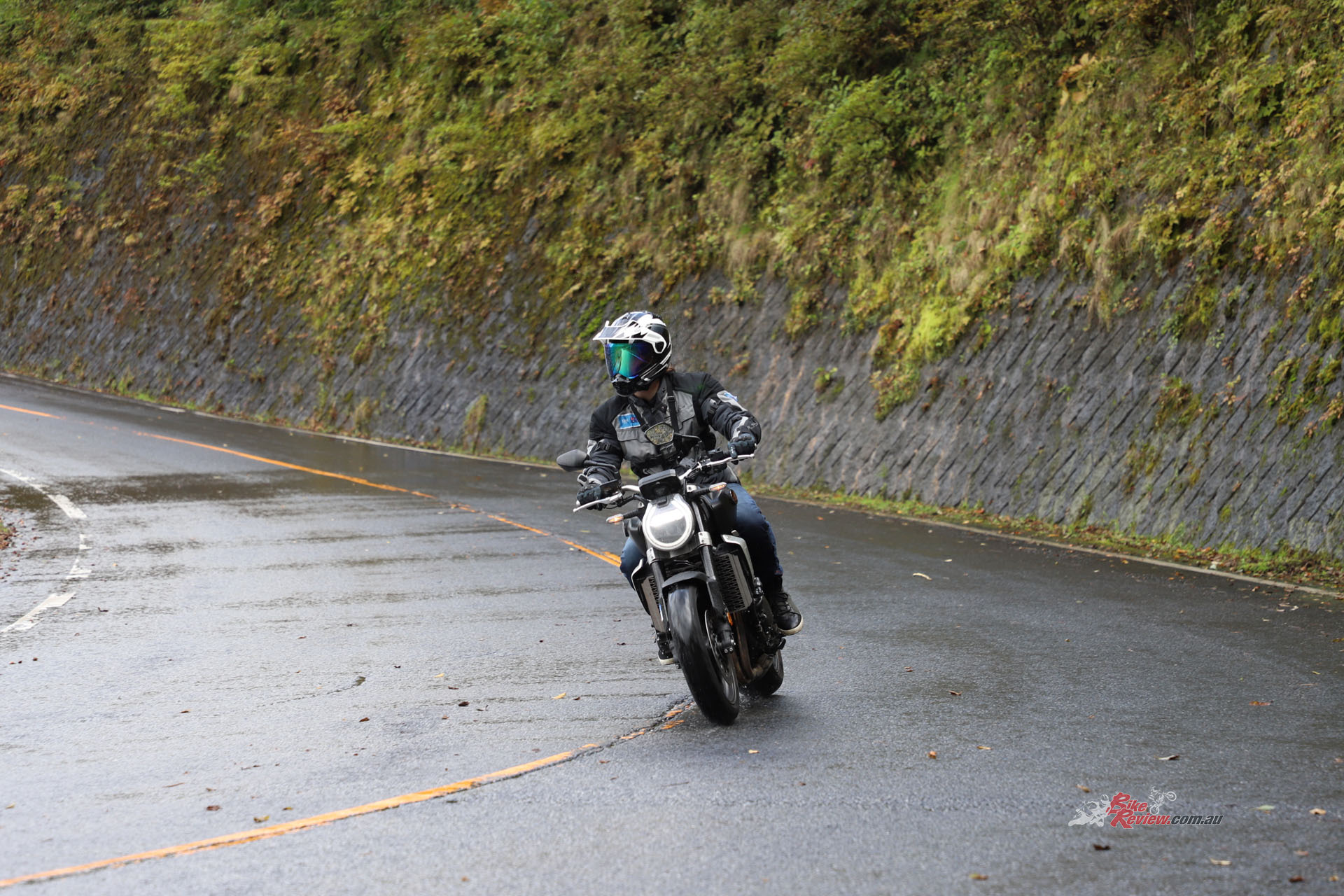
The rain started to fall as we headed up through the mountains of the Fukushima region, which allowed me to try out how well the water stays out and how well that Pinlock system works.
The rain started to fall as we headed up through the mountains of the Fukushima region, which allowed me to try out how well the water stays out and how well that Pinlock system works. Sure enough, there was no internal visor fog or water entering the lid. Even with all the vents open, no water actually made it to my face or hair.
An adjustable chin flap makes wind noise and comfort slightly better, but not to a noticeable extent. It should be noted that the Tour-X5 has an odour-resistant interior, which comes in handy with the wet weather we experienced on the launch. The interior (with the visor down) does run slightly warm. In the Australian summer months, I predict the need to have my visor popped slightly, even with all the vents open; this seems to be the case with most helmets.
We stayed in a hotel up in the mountains of Shimonita. I cannot stress how beautiful this region is, the roads are spectacular and well maintained despite barely seeing anyone using them. I never considered Japan as an excellent touring country but they have some of the most fun roads I’ve ever had the pleasure of riding around the world.
After swapping to a CB1000X for the long and twisty ride home, I noticed the only major issue I had with the Tour-X5, and that’s the blue/iridium visor doesn’t block out sunlight all that well. It’s hard to see through at nighttime and then is blindingly average whilst riding into the sun, I wish I opted for the Dark Smoke visor instead.
We made our way back to Arai through Nikko where the roads are absolutely spectacular. Anywhere you stopped on the side of the road just had the most amazing views I’ve ever seen. We stopped somewhere around the Nikko National Park at a weird cow themed restaurant near the Nantai-san mountain. I cannot stress enough how amazing this country is to tour.
“Making it back to Arai in Saitama after a good 20ish hours of wearing the helmet, I can honestly say that I’m still not in a hurry to take the lid off.”
Making it back to Arai in Saitama after a good 20ish hours of wearing the helmet, I can honestly say that I’m still not in a hurry to take the lid off. It performs excellently and is super comfortable for those long hauls, even when it’s a Large and I’m usually an XL. I wouldn’t mind having a play around with the foam inserts; I noticed some pressure on my forehead, but not enough to make it uncomfortable.
I had the opportunity for Akihito and Michio Arai to sign the lid with some of the coolest signatures I’ve ever seen. If it wasn’t such a great helmet to wear, I would hang it up on my shelf for display, but I will certainly be using it for any adventure rides.
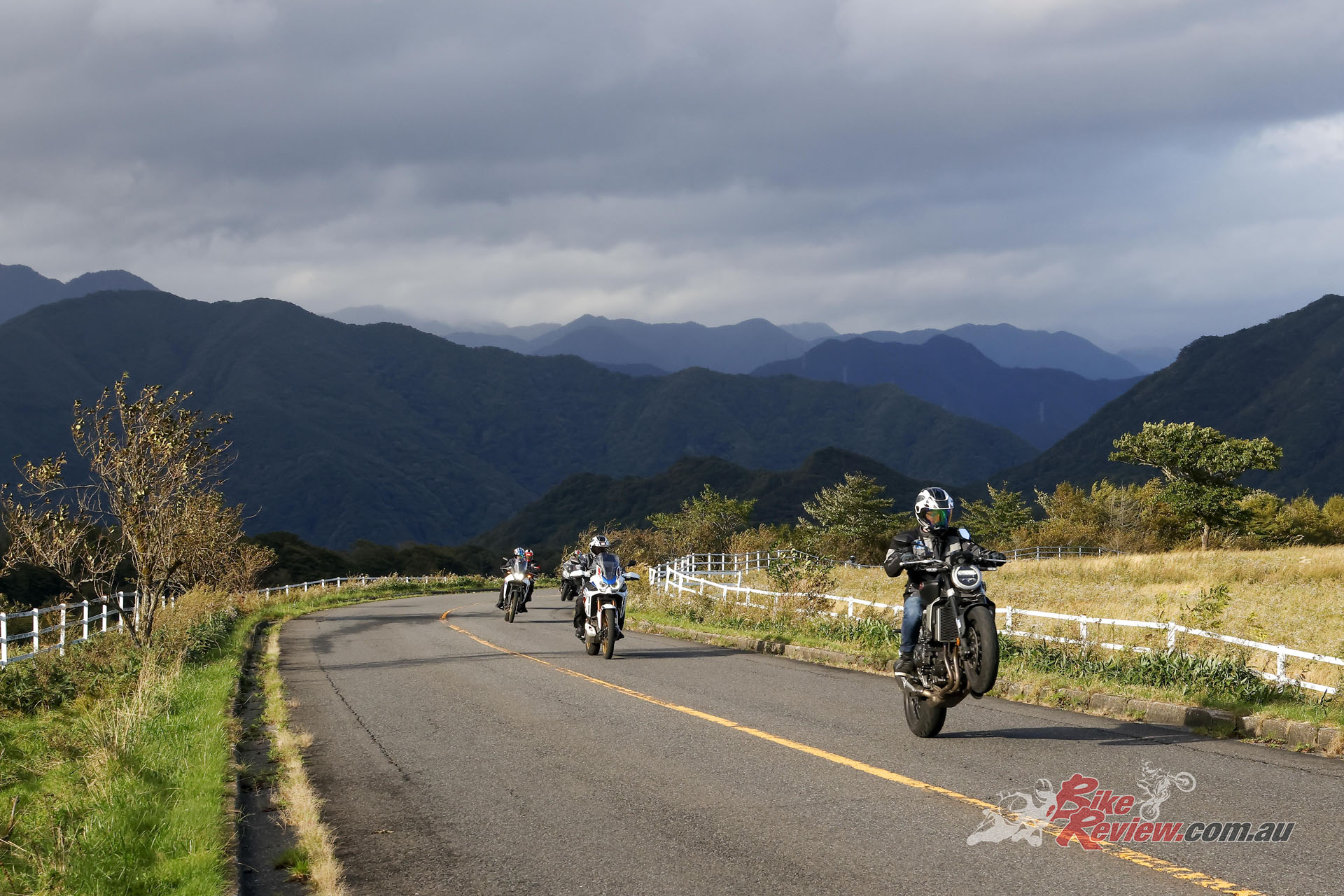
“If it wasn’t such a great helmet to wear, I would hang it up on my shelf for display, but I will certainly be using it for any adventure rides.”
The pricing and Australian availability of the new Arai Tour-X5 is still TBA…
Arai Tour-X5 Colour Options
Editor’s Note: If you are reading this article on any website other than BikeReview.com.au, please report it to BikeReview via our contact page, as it has been stolen or re-published without authority.
The Verdict | Gear Review: Arai Tour-X5 Helmet, World Launch


